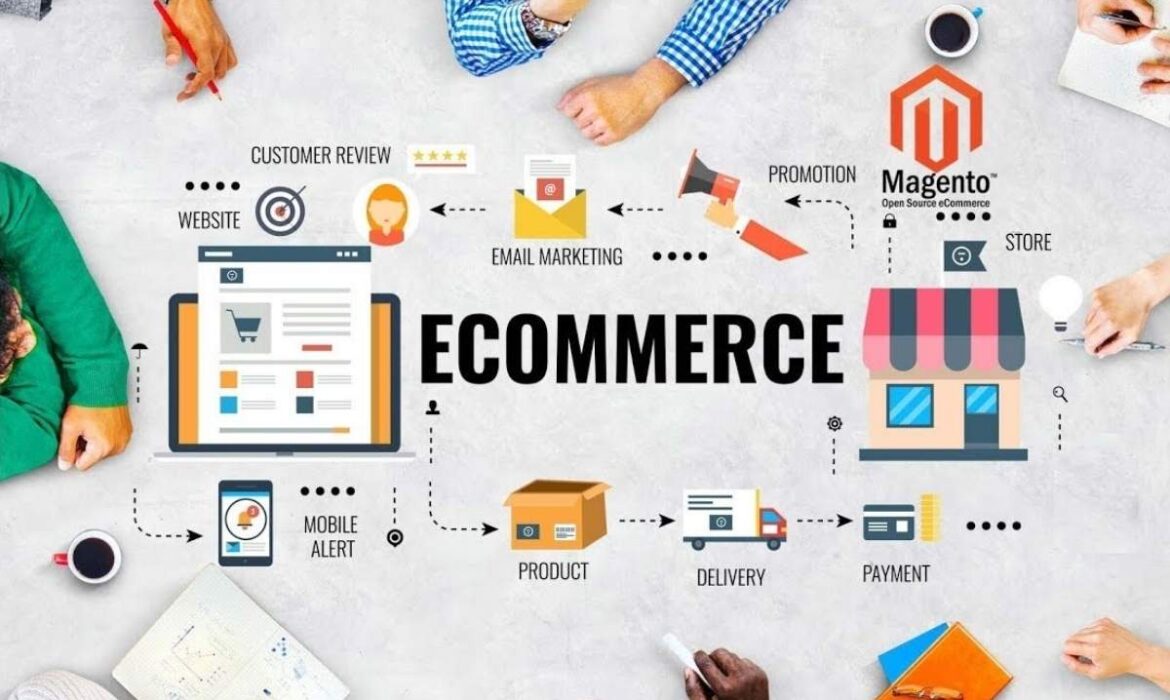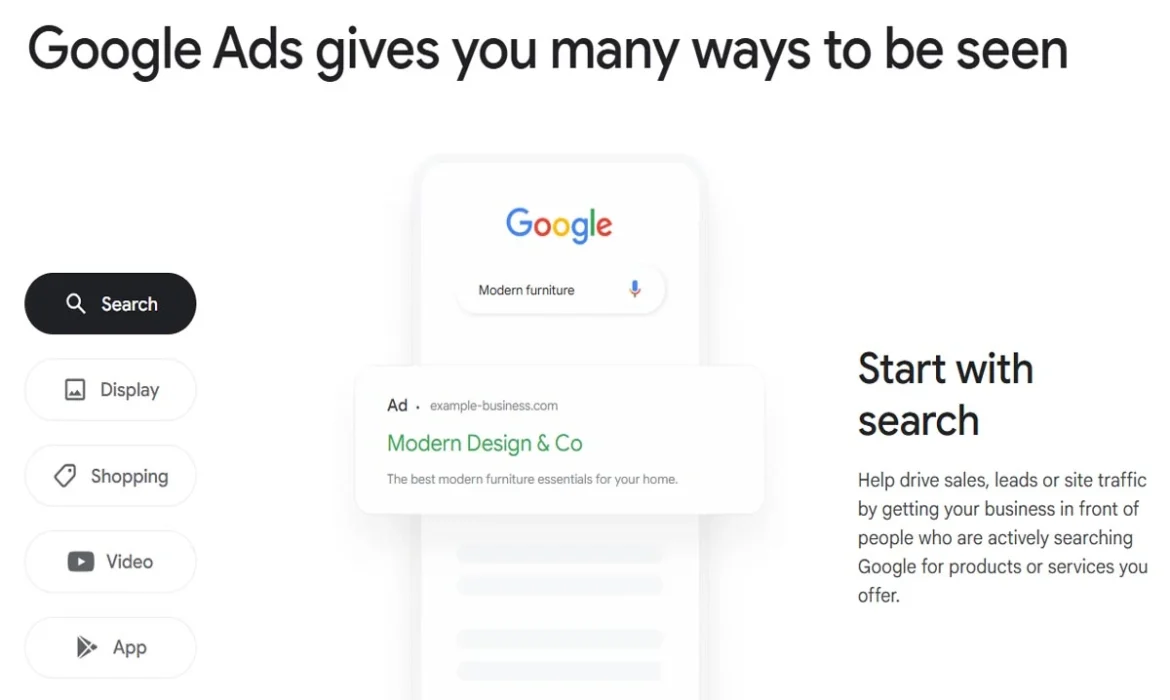Next-Generation eCommerce Agency in Dubai for Retailers, Wholesalers, & Manufacturers
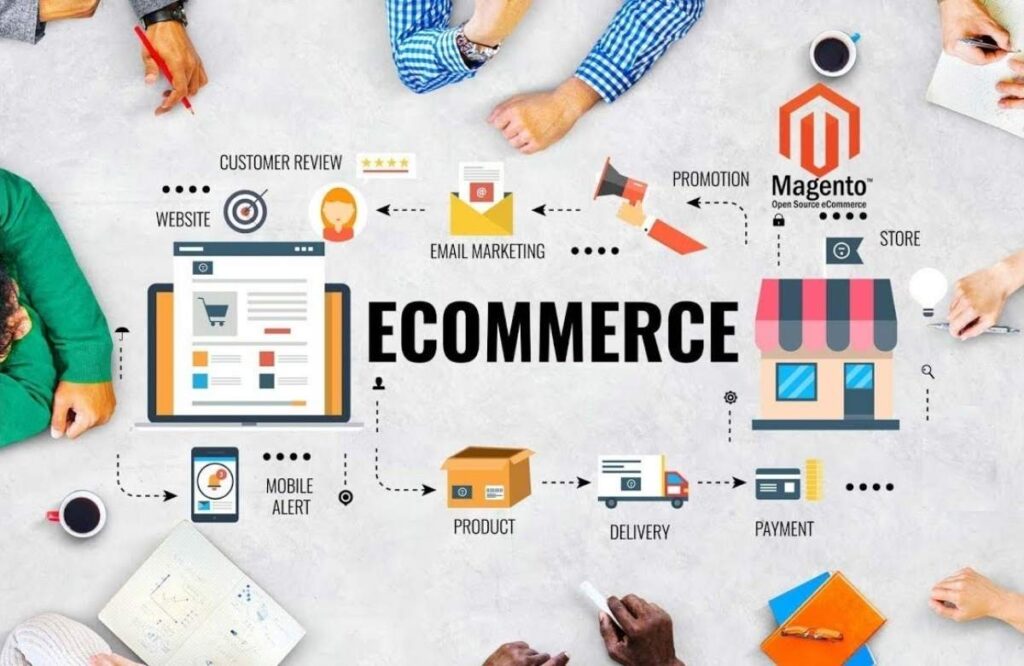
Digital market in Dubai moves fast. Every business now competes for visibility and customer trust. You must adapt to survive. That urgency explains why many companies partner with the Best Ecommerce Agency in Dubai to build scalable online operations.
You can see how consumer behavior has changed. A Statista report in 2025 showed that over eighty-eight percent of UAE consumers shop online each month. The number grows every year.
Traditional sales channels cannot keep up, which is why partnering with professional Amazon account management services has become essential for brands aiming to capture this expanding digital audience.
You need a reliable eCommerce strategy that connects with modern buyers. A professional agency gives you that edge through expert planning, design, and marketing execution.
Why Should Businesses in Dubai Invest in eCommerce Now?
Dubai’s economy thrives on innovation and global trade. You can reach regional and international customers faster through a strong online store. A full-service eCommerce website design and development team builds platforms that handle traffic, manage payments, and convert visitors into customers.
Many retailers and wholesalers have already shifted to digital platforms. Reports from the UAE Ministry of Economy show that eCommerce revenue will exceed USD 10 billion in 2025. That growth reflects both consumer confidence and market maturity. You can expand faster if your store integrates smart tools like product automation, analytics, and responsive web design.
It is important to understand that eCommerce success depends on user experience. A fast, mobile-friendly site with secure checkout increases trust. Shoppers expect convenience and clarity. When you provide both, you reduce cart abandonment and boost sales.
What Makes the Best Ecommerce Agency in Dubai Stand Out?
You should evaluate an agency beyond design quality. True excellence lies in strategy, execution, and measurable growth. The Best Ecommerce Agency in Dubai combines creativity with data-driven insights. It connects business objectives with user behavior to ensure consistent conversions.
An expert agency begins with detailed research. It studies audience demographics, competitors, and traffic sources. You receive a plan based on actual market data rather than guesswork. That precision defines an expert-led eCommerce marketing agency in Dubai.
Technical expertise also matters. A professional team handles everything from custom web development to platform integration. Shopify store development , WooCommerce, or Magento stores that function smoothly on all devices. Speed, navigation, and security create a professional first impression.
A reliable partner maintains transparency. You receive regular updates and performance reports. Analytics dashboards track revenue, conversion rates, and customer engagement. That visibility keeps your strategy accountable and aligned with growth targets.
How Do Expert Agencies Help Retailers, Wholesalers, and Manufacturers Grow?
Each business type has unique challenges. You cannot apply the same approach to all. Retailers need eye-catching product pages. Wholesalers depend on order management systems. Manufacturers require scalable distribution models.
A qualified agency tailors scalable eCommerce solutions for retailers and wholesalers. The system supports multiple price tiers, inventory sync, and B2B portals. A manufacturer benefits from integrated catalogs and distributor dashboards. Retailers need personalized recommendations to increase cart value. That balanced structure works as a Winning Formula for eCommerce Success, helping every business model achieve measurable growth.
You should expect measurable growth from an agency partnership. Many Dubai-based eCommerce brands have seen sales double within a year after redesigning their platforms. That improvement proves how expert execution drives results.
Top rated Digital Oasis agency provides end-to-end support for each model. The agency combines design precision with marketing intelligence to ensure your brand reaches the right audience. Each project aims to generate revenue, not just traffic.
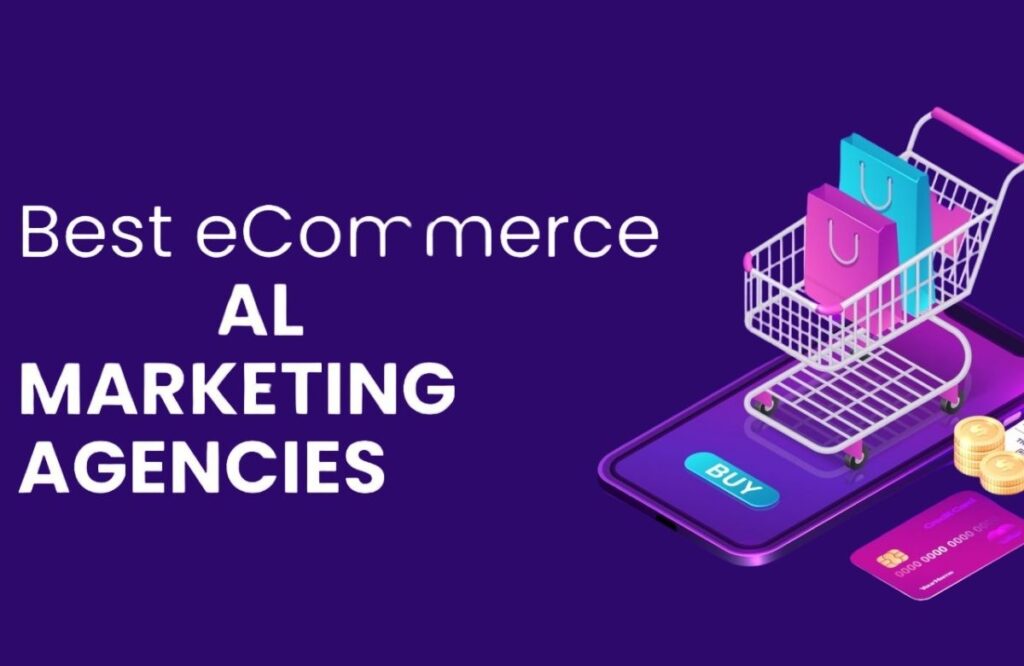
What Services Does a Leading eCommerce Agency Offer?
The Best Ecommerce Agency in Dubai offers multiple services under one roof. You get technical development, creative design, and marketing management in a single system. That unity ensures consistency and better coordination.
You can expect
- Custom store design optimized for conversion and mobile access.
- SEO-ready structure that ranks on Google and attracts organic traffic.
- Product optimization through schema markup and advanced search filters.
- Marketing campaigns that include paid ads, social media, and retargeting.
- Integration with CRMs and automation tools to track customer journeys.
Each element supports growth and retention. You save time, reduce cost, and maintain focus on sales rather than technical maintenance.
Agencies that specialize in Dubai eCommerce growth and conversion specialists use advanced tools to test user behavior. A/B testing and heatmaps identify where customers drop off. Small adjustments often lead to major revenue jumps. That methodical refinement defines professional digital craftsmanship.
Why Choose a Local Dubai-Based eCommerce Partner?
Local expertise matters. A Dubai-based agency understands market culture, payment systems, and logistics providers. You gain access to faster implementation and real-time support.
Local teams also ensure compliance with VAT regulations and local hosting requirements. You avoid technical risks that arise from offshore coordination. You also benefit from easier communication. Meetings and revisions move faster when your partner works in the same time zone.
According to PwC, UAE businesses that choose regional partners complete projects thirty percent faster on average. Speed helps you launch early and capture trends before competitors react.
Digital Oasis operates in Dubai with an understanding of the local business climate. The team works directly with clients across the UAE, ensuring smooth collaboration and immediate response times.
How Does a Professional Agency Execute a Winning Strategy?
A professional agency follows a clear process. You begin with consultation and requirement analysis. The agency studies your goals and current website data. Then it creates a wireframe and design mockup that reflect your brand.
Developers code the platform and integrate payment gateways. Quality assurance follows to test speed, security, and mobile adaptability. After launch, marketers run advertising campaigns and SEO optimization services to attract visitors.
Each phase aligns with measurable KPIs. Conversion tracking ensures that every change produces results. Monthly reports summarize progress and identify areas for improvement. That structure gives you both control and clarity.
What Results Can You Expect From the Best Ecommerce Agency in Dubai?
You can expect consistent improvement across all metrics. Organic traffic rises from improved SEO. Paid campaigns bring targeted visitors. Better UX increases conversions. Combined results create long-term revenue growth.
Studies show that professionally managed eCommerce stores in the UAE achieve conversion rates up to 2.8 times higher than average websites. That statistic confirms that design and marketing alignment drives tangible outcomes.
Agencies also optimize lifetime customer value. Email automation, loyalty rewards, and remarketing bring repeat buyers. You pay less for acquisition while maintaining higher engagement levels.
Digital Oasis focuses on performance-driven development. Every project aims for measurable ROI through analytics and conversion optimization. You receive full transparency on campaign progress and expenditure.
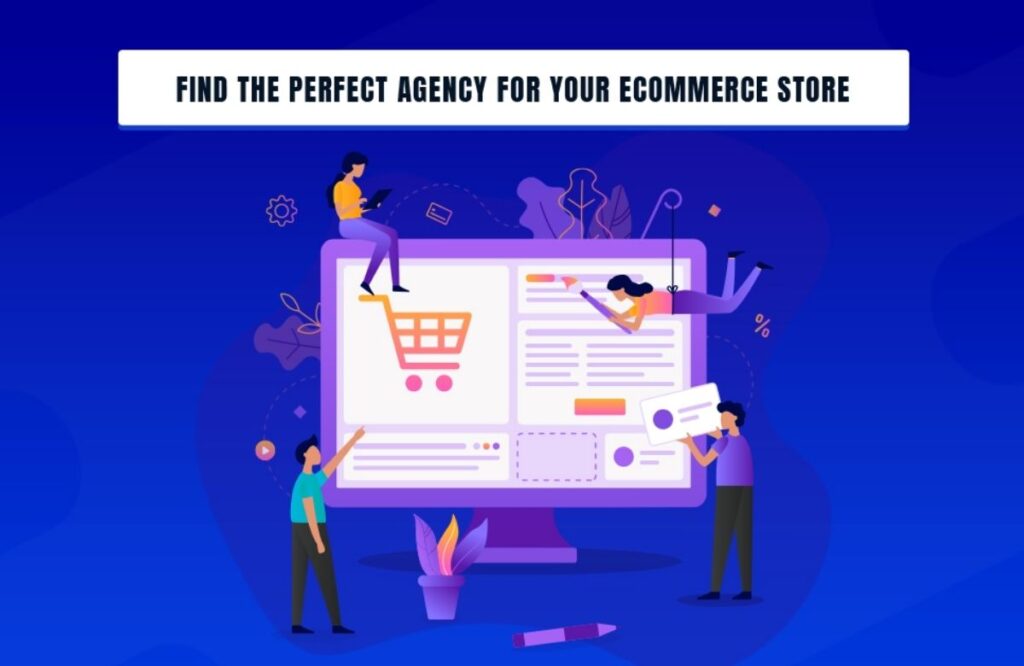
How to Choose the Best Ecommerce Agency in Dubai for Your Business?
You should begin with a clear set of criteria. Evaluate experience, team size, and past results. Check if the agency has handled projects similar to yours. Case studies reveal reliability.
Ask about the platforms they use. A full-service eCommerce website design and development partner should handle Shopify, Magento, and WooCommerce. Verify their hosting and maintenance processes.
Communication style defines long-term success. Agencies that provide consistent updates ensure smoother collaboration. Flexibility in pricing also matters. Choose a partner who adjusts scope as your business grows.
You can connect the agency’s performance with its transparency. Frequent reporting builds trust. Long-term partnerships depend on accountability and shared goals.
Why Digital Oasis Leads the Next Generation of eCommerce Agencies
Digital Oasis represents innovation and dependability in Dubai’s competitive market. The agency focuses on customized eCommerce strategies that combine creative design with performance tracking.
You gain access to certified developers, content strategists, and marketing professionals. The team builds functional stores, manages SEO, and handles paid campaigns. Every solution aims to increase traffic, conversions, and revenue.
You should rely on an agency that values results over promises. Digital Oasis delivers data-backed decisions and regular insights. That approach makes it a trusted partner for retailers, wholesalers, and manufacturers seeking measurable growth.
Frequently Asked Questions
What makes an agency the Best Ecommerce Agency in Dubai?
An agency that offers design, marketing, and analytics under one system ensures better performance and ROI.
How long does it take to launch a new eCommerce site?
Project timelines range from four to ten weeks depending on functionality and size.
Which platform suits small retailers best?
Shopify and WooCommerce remain popular due to ease of use and scalability.
Do agencies in Dubai handle Amazon and Noon integration?
Yes, most provide marketplace listing, optimization, and fulfillment management.
Can eCommerce outsourcing help wholesalers?
Yes, scalable eCommerce solutions for retailers and wholesalers manage bulk pricing, logistics, and automation.
How can agencies improve conversion rates?
A focus on design, content, and data analysis enhances user journeys and boosts sales.
Are Dubai agencies suitable for startups?
Yes, flexible pricing plans and modular development suit growing businesses.
Does Digital Oasis provide after-launch support?
Yes, the team offers maintenance, analytics, and performance updates to ensure continued growth.
Build Sustainable Growth Through Professional eCommerce Support
Digital marketplace never slows down. You must act now to stay ahead. Partnering with the Best Ecommerce Agency ensures that your business adapts to modern consumer behavior and thrives in competitive markets.
A strong eCommerce foundation improves reach, visibility, and customer experience. You can expand faster, sell smarter, and build lasting brand credibility.
You should consider Digital Oasis as your strategic partner. The agency delivers expert-led solutions that combine creativity, technology, and measurable results. Every project reflects commitment to transparency and growth. Success begins when your store becomes your strongest sales channel.
Related Blogs You May Find Helpful:
PPC Account Management in Dubai | Maximize ROI
Running ads in Dubai feels like throwing money into a black hole sometimes, doesn’t it?
You’re not alone in this struggle. Actually, studies show that 72% of businesses waste their PPC budgets due to poor campaign management. Even worse, 68% of companies admit they don’t understand their PPC performance metrics.
Businesses typically lose 35% of their advertising spend on irrelevant clicks. Without proper management, your cost-per-click can increase by up to 400% over time. Meanwhile, 89% of successful Dubai businesses rely on professional PPC account management services.
But here’s the good news—you don’t have to join the statistics of failed campaigns. Professional PPC account management in Dubai can completely flip your advertising game. Think of it as having a financial advisor for your ad spend, except they make you money instead of just managing it.
Why Dubai Businesses Can’t Survive Without Professional PPC Help
Look, Dubai’s digital scene is absolutely crazy competitive right now. New businesses venture into online advertising every day, and they feel that they can just fake it with Google Ads. Spoiler warning: they are unable to. That’s why smart businesses turn to PPC optimization experts in Dubai to stay ahead.
While you’re watching YouTube tutorials about keyword research, your competitors already hired the best PPC account management in Dubai months ago. They are gobbling up your prospective customers before you can even say cost per click. It is sort of like taking a knife to a gunfight.
Meet Digital Oasis: Dubai’s Game-Changing PPC Powerhouse
Now, let me tell you about Digital Oasis—these guys are crushing it in Dubai’s PPC scene. They’re not just another PPC account management in Dubai promising the moon; they actually deliver results that’ll make your accountant smile. Plus, they know Dubai’s market like the back of their hand.
They don’t play games with your money. You get full transparency about where every dirham goes, and their reporting actually makes sense. No confusing jargon or fluff—just straight-up results you can bank on.
What Goes Into World-Class PPC Account Management
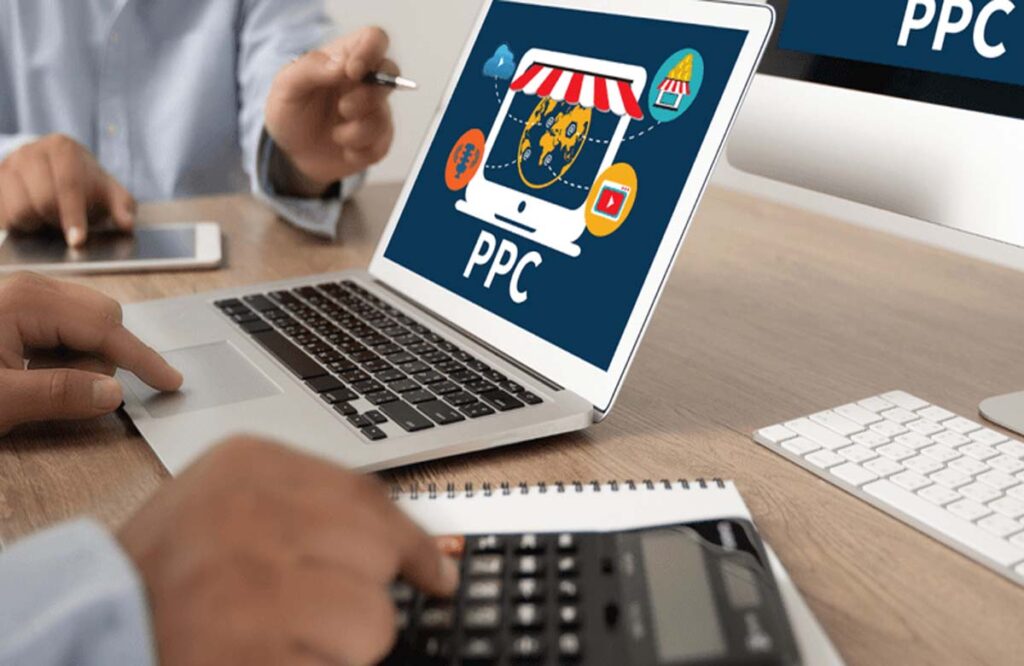
Okay, now you are probably thinking to yourself, what exactly do these PPC wizards do every day, right? Yeah, and it is a much more complicated process than simply composing advertisements and crossing your fingers. It can be thought of as an orchestra affair; all the factors require amazing timing and coordination.
- Keyword research and analysis
- Ad copy creation and testing
- Bid management and optimization
- Landing page optimization
- Performance monitoring and reporting
- Budget allocation and management
- Competitor analysis
Here’s the thing—each of these tasks could be a full-time job on its own. When you try to juggle all of them yourself, something’s bound to slip through the cracks. That’s why professional PPC account managers in Dubai are worth their weight in gold.
How Do You Know If Your PPC Campaigns Are Actually Working?
This is where most people get completely lost in the numbers game. You’ve got dashboards showing dozens of metrics, and honestly, half of them probably don’t even matter for your business goals. Let me break down what actually counts.
| Metric | Description | Why It Matters |
| Click-Through Rate (CTR) | Percentage of people who click your ad after seeing it | Indicates ad relevance and appeal |
| Cost Per Click (CPC) | Average amount spent for each click | Determines budget efficiency |
| Conversion Rate | Percentage of clicks that result in desired actions | Measures campaign effectiveness |
| Return on Ad Spend (ROAS) | Revenue generated per dirham spent on advertising | Shows overall profitability |
| Quality Score | Google’s rating of ad and landing page relevance | Affects ad positioning and costs |
| Impression Share | Percentage of available impressions your ads receive | Indicates market presence |
The best PPC account management in Dubai checks these numbers daily and actually understands what they mean. They spot trends before they become problems and make adjustments that keep your campaigns profitable.
The Biggest Money-Wasting Mistakes Everyone Makes With PPC
Let’s talk about the painful stuff—the mistakes that are probably bleeding your budget dry right now. I’ve seen businesses burn through thousands of dirhams making these exact same errors. It’s heartbreaking.
Here’s what kills most DIY campaigns:
- Targeting overly broad keywords
- Ignoring negative keywords
- Setting campaigns and forgetting them
- Poor ad copy testing
- Misaligned landing pages
- Improper budget distribution
The broad keyword thing is probably the worst offender. You think targeting “business services” will bring you leads, but you end up paying for clicks from people looking for janitorial services. Meanwhile, your specific keywords that actually convert are getting zero budget.
What Separates Top Performers From Average PPC Campaigns
Want to know what the big players are doing that you’re probably not? They are playing chess, whereas others are playing checkers. Remember, the best strategies for ads are not the rocket strategies, but you need the best PPC account management in Dubai from someone who understands what they are doing.
Remarketing is like gold—just think how wonderful it would be to be able to display ads to those individuals who have already been on your site. These folks are warm leads, and they convert like crazy. Plus, it costs way less than trying to find brand-new customers from scratch.
Why Timing Is Everything in Dubai’s PPC Market
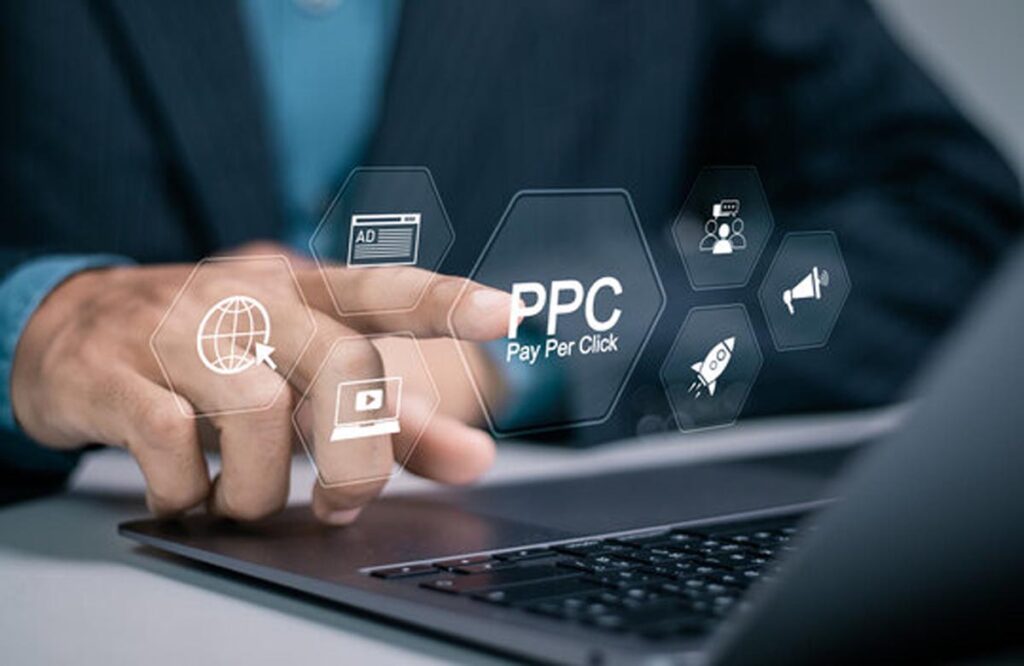
Here’s something most people don’t realize about Dubai—the city literally never sleeps, but that doesn’t mean everyone’s shopping 24/7. There’s actually a rhythm to when people are most likely to click and buy, and missing this timing is like fishing in an empty pond.
Think about it—Emiratis might be most active during different hours than expats. Ramadan completely changes shopping patterns. Weekend behavior is totally different here compared to Western markets. Professional services for PPC account management in Dubai get this stuff because they live and breathe Dubai’s unique vibe.
The Real Cost of DIY PPC Management vs. Professional Services
Let me hit you with some real talk here—that “free” DIY approach is probably costing you more than you think. Sure, you’re not paying agency fees, but what about all those evenings and weekends you spend trying to figure out why your campaigns suck?
Your time is worth something, right? If you’re spending 10 hours a week on PPC (and let’s be honest, it takes at least that much), you’re basically working a part-time job for questionable results. Meanwhile, that time could be spent actually running your business and making real money.
What Makes Dubai’s PPC Landscape Different From Other Markets
Dubai is not New York or London, and it has got its personality, and your ads must recognize that. You have locals and long-term expats, business travelers and tourists, and everything in the middle. The two groups have different thought processes and different ways of shopping and reactions to the same set of messaging.
This is simply the iceberg of language. Of course, English is fine when you need some business-related things, but how much better can it resonate with the local people when you use Arabic? Then you have that cultural stuff that will make or break your campaign; drop the ball and you find you are unwittingly insulting half your potential market. That’s why expert PPC account management in Dubai takes both language and culture into account to ensure success.
Conclusion
Look, I’m not going to sugarcoat this—trying to handle PPC yourself in Dubai’s crazy competitive market is like trying to perform surgery after watching a few YouTube videos. You might get lucky, but more likely, you’ll just make expensive mistakes that could’ve been avoided.
Digital Oasis is the best provider of PP account management in Dubai. Their comprehensive services include:
- Amazon FBA Private Label Services in the UAE.
- They excel in Amazon PPC management and Amazon SEO optimization.
- Their team specializes in Amazon product hunting and Amazon product sourcing.
- They deliver exceptional Amazon product launch campaigns.
- Plus, their Amazon Listing Optimization drives maximum visibility.
Ready to transform your PPC performance and dominate Dubai’s digital landscape?
Contact Digital Oasis today for a free consultation and learn how professional PPC account management in Dubai can skyrocket your ROI.
Don’t let another day pass watching competitors steal your customers—take action now!
Get More Leads Fast With a Google Ads Marketing Agency in Dubai
Here’s a reality check that’ll wake you up: Businesses using Google Ads generate an average ROI of 800%—that’s $8 for every $1 spent. But here’s the kicker—Dubai has the highest cost-per-click rates in the world, 8% higher than even the USA.Most businesses are bleeding money because they’re treating Google Ads like a slot machine instead of a precision instrument. That’s why many turn to PPC advertising services in Dubai for expert management and better results.
I’ve watched Dubai businesses spend AED 50,000 on Google Ads campaigns and receive maybe three phone calls. Meanwhile, smart companies working with the right Google Ads marketing agency in Dubai are pulling in hundreds of qualified leads monthly with half that budget.
The difference isn’t luck—it’s expertise. Let me show you how to stop burning cash and start printing leads.
1. Why DIY Google Ads in Dubai Is Financial Suicide

Look, I get it. You believe that Google Ads simply involves a little keyword typing and Google does its thing. It is similar to believing that Formula 1 is all about what happens when one steps on the gas pedal.
The market of Dubai is ruthless. You have to deal with huge international companies that have unlimited funds, local enterprises that are marketing on the streets, and international enterprises that are doing what they are supposed to.
A single inaccurate keyword bid and you will have burnt out all your monthly rainbow leads with nothing to prove in the meeting. And that’s exactly why having the right Google Ads marketing agency in Dubai on your side makes all the difference.
2. The Hidden Costs of Amateur Google Ads Management
The Real Price of “Cheap” Management
Most companies do not realize that they are wasting money that they cannot even see. Bad quality ratings imply that you are 3 times more likely to pay per click than others.
Hidden costs that kill your budget:
- Irrelevant traffic (clicks from people who’ll never buy)
- Geographic targeting mistakes (paying for clicks from other countries)
- Wrong keyword match types (bleeding budget on unrelated searches)
- Poor ad scheduling (showing ads when your audience is asleep)
- No negative keywords (paying for completely irrelevant clicks)
The Opportunity Cost Reality
Each day that you spend running sub-optimized campaigns is a day you are losing cash you will never see again. Even as you spend AED 500 a day making useless clicks, your competitors are obtaining your prospective clients.
3. What Makes a Google Ads Marketing Agency in Dubai Worth Every Dirham
Your ads are just the tip of the iceberg with the right Google Ads marketing agency in Dubai. They become your lead-generating machine. They are aware of the peculiarities of the Dubai market, local cultural peculiarities, and the consumer behavioral patterns.
Expert agencies understand that Dubai consumers have different searching behavior during Ramadan; they respond to certain cultural triggers, and they display different buying behavior within each demographic segment. A Google advertising company Dubai takes these nuances into account to optimize ad performance.
It is this local expertise in combination with the technical expertise that turns ad spend into investment.
4. The Dubai Advantage: Local Market Intelligence
| Market Segment | Best Performing Times | Optimal Budget Allocation | Average CPC (AED) |
| Business Services | 9 AM – 11 AM, Sun-Thu | 40% weekdays | 12.50 |
| Luxury Retail | 7 PM – 10 PM, Thu-Sat | 60% weekends | 18.75 |
| Tourism/Hotels | 8 PM – 11 PM, daily | Even distribution | 15.25 |
| Food & Dining | 11 AM – 2 PM, 6 PM – 9 PM | 70% of meal times | 8.50 |
| Real Estate | 10 AM – 12 PM, 4 PM – 7 PM | 80% business hours | 22.00 |
5. Campaign Optimization Strategies That Actually Work

Forget generic best practices. Dubai also needs hyper-local optimization with local search behavior, local cultural events, and seasonal trends.
Not only will the best Google Ads marketing agency in Dubai target the Dubai Shopping Festival, but it will also make adjustments to pandemic tourism trends in summer and know how the legacy of the Expo 2020 continues to influence the search behavior.
They will also understand which Arabic keywords work better than English ones, even when they are communicating with English-speaking people.
6. Lead Quality vs. Lead Quantity: The Dubai Balance
More leads don’t mean better results. I’ve seen businesses celebrate 500 leads per month while their sales team complained about wasting time on unqualified prospects.
Quality leads in Dubai might cost AED 150 each, but they close at 40% rates. Cheap leads at AED 30 each that never convert are actually more expensive.
Smart agencies focus on lead quality metrics: lead-to-customer conversion rates, customer lifetime value, and actual revenue generated per lead.
7. Advanced Targeting Techniques for Dubai’s Diverse Market
Demographic Precision Targeting
High-converting audience segments:
- High-income expats in specific emirates (Marina, Downtown, JBR)
- Business decision-makers in designated free zones (DIFC, DMCC, JAFZA)
- Tourists staying in luxury hotels (within 5 km of premium shopping areas)
- Local residents with specific shopping behaviors (luxury brand affinity)
- B2B prospects based on company size and industry (construction, finance, tourism)
Cultural and Seasonal Adjustments
The smartest campaigns adapt messaging and targeting based on cultural events. Ramadan campaigns need completely different approaches than Dubai Summer Surprises promotions.
8. The Technology Stack That Powers Results
Modern Google Ads management requires sophisticated tools that most businesses can’t afford individually. Advanced bid management platforms, conversion tracking systems, and AI-powered optimization tools cost thousands monthly.
A professional Google Ads marketing agency in Dubai has enterprise-level tools and knows how to use them effectively. They are working with machine learning algorithms, and you are setting bids manually.
That is why agency-based campaigns usually work 200-300% better than in-house teams.
9. Budget Management: Getting Maximum ROI from Every Dirham
Dubai’s high CPCs mean budget management isn’t optional—it’s survival. Professional Google Ads marketing agency in Dubai have advanced budget planning tactics that achieve maximum results in various types of campaigns.
They understand when to pull budgets at low performance times, and they also understand when they should push the budget at high converting periods. Such dynamic practice may increase ROI by 50-80%.
10. Conversion Tracking and Attribution: Seeing the Complete Picture
Most businesses only track basic conversions and miss the complete customer journey. The majority of businesses only monitor simple conversions and overlook the entire customer journey. A Google Ads marketing agency in Dubai provides more sophisticated tracking to see which keywords, ads, and audiences bring revenue.
They monitor calls, web submissions, those who visit their stores, and even offline conversions. This full-scale snapshot allows making optimization decisions on actual profits, not egoism.
Stop Burning Money, Start Generating Leads
Dubai’s competitive landscape doesn’t forgive amateur Google Ads management. While you’re struggling with poor performance and rising costs, businesses working with expert agencies are capturing market share and growing rapidly.
Digital Oasis transforms Google Ads from expense to profit center. It is ranked as the best Google Ads marketing agency in Dubai.
Lead generation that actually converts.
Campaign optimization that cuts costs while boosting results.
Local market expertise that gives you unfair advantages.
Advanced tracking that shows real ROI.
Strategic scaling that grows your business sustainably.
Ready to dominate your market? Let’s make it happen. Call us and see the difference.
The ROI of Expertly Crafted Marketing Ads in Dubai
Here’s something that’ll blow your mind: ad spending in the UAE digital advertising market is projected to reach an impressive $1.219 billion in 2025. Meanwhile, the digital advertising market in the UAE is projected to grow by 6.36% through 2028, reaching $1.451 billion. But here’s the kicker—most businesses are still throwing money at marketing ads in Dubai like they’re feeding pigeons in Zabeel Park
I have seen several Dubai companies burn through their marketing expenses quicker than a Ferrari traveling on the Emirates Road and be unable to find out why their Dubai marketing advertisements are not producing any results. When it comes to local advertising in Dubai, success is not a matter of luck; it is strategy, implementation, and knowing exactly what drives the needle.
1. Why Most Dubai Marketing Campaigns Are Secretly Bleeding Money
Walk through any Dubai business district and you’ll see the same sad story repeated everywhere. Beautiful offices, expensive websites, and marketing ads in Dubai that are about as effective as an umbrella in a sandstorm.
The brutal truth? The vast majority of businesses are tuning to the vanity metrics rather than revenue. They are getting excited about 10,000 impressions and not paying attention to the fact that no one purchased something.
The market of Dubai is special, varied, and mind-blowingly advanced. You can bring your cookie-cutter campaigns to other countries, but here it will never work. period.
2. The Real Numbers: What Expert Marketing Actually Delivers

Let me share some numbers that’ll make your accountant smile. Well-crafted marketing ads in Dubai typically deliver 3-5x higher ROI than amateur attempts.
I’ve seen businesses go from losing money on every click to generating $8 for every $1 spent. The difference isn’t magic—it’s understanding Dubai’s audience psychology, cultural nuances, and buying behaviors.
Expert campaigns don’t just get more clicks; they get the right clicks from people who actually have money to spend.
3. Understanding Dubai’s Unique Advertising Landscape
The Audience Complexity Challenge
Dubai is not a single market, and it would be better to say that it is 15 markets squeezed together in one city. You have tourists with burning credit card pockets, expats with tax-free wages, and citizens of extraordinary buying power.
Your audience segments breakdown:
- High-income expats (35% of the market, highest lifetime value)
- Affluent tourists (25% of the market, quick conversion cycles)
- Local Emiratis (20% of the market, brand-loyal, word-of-mouth driven)
- Business travelers (15% of the market, expense-account budgets)
- Budget-conscious residents (5% of the market, price-sensitive but loyal)
Cultural Sensitivity = Higher Conversions
Unculturized marketing ads in Dubai are as good as money kept in garbage. Culturally relevant messaging or Ramadan campaigns and Eid promotions can boost your conversion rates by a factor of 2 overnight.
4. Platform Performance: Where Your Money Works Hardest
| Platform | Dubai ROI Performance | Best Audience Segment | Average CPC (AED) |
| 4.2x average ROI | Lifestyle/Fashion buyers | 2.50 | |
| 5.8x average ROI | B2B/Professional services | 8.75 | |
| Google Ads | 3.9x average ROI | High-intent searchers | 3.20 |
| 3.1x average ROI | Local community | 1.80 | |
| TikTok | 2.8x average ROI | Gen Z/Millennials | 1.95 |
5. The Psychology Behind High-Converting Dubai Ads
Dubai consumers are incredibly brand-conscious and status-aware. It is not the products that are being bought; rather, it is lifestyles, experiences, and social positioning.
Your advertising campaigns in Dubai should appeal to the aspirations rather than the features. The demos should also show how your product allows your consumers to live, not only what it does.
6. Creative Elements That Actually Drive Sales
Visual Storytelling That Resonates
High-performing creative elements:
- Dubai skyline integration (increases engagement by 40%)
- Luxury lifestyle imagery (boosts click-through rates by 60%)
- Cultural celebration themes (drive 3x higher sharing rates)
- Before/after transformations (increases conversion rates by 85%)
- Social proof from local influencers (builds trust instantly)
Copy That Converts in Dubai’s Market
Avoid the corporate-speak. Dubai reacts to self-assured, goal-driven, and somewhat exclusive messaging. The phrase “Limited availability in Dubai” is more efficient than the phrase “Buy now and get a discount.”
7. Timing and Seasonality: When Dubai Actually Buys
Dubai is in its beat, and intelligent marketers flow with these tides rather than trying to go against them. Overall, marketing ads in Dubai during the touristic season (November–March) will bring 40% more ROI compared to campaigns done during the off-season.
Ramadan needs a totally different message and timing. Summer months need indoor, comfort-focused angles. Dubai Shopping Festival creates massive opportunities for retail campaigns.
Understanding these patterns is the difference between profitable campaigns and expensive lessons.
8. Budget Allocation Strategies That Maximize Returns
Most businesses spread their ad budget like peanut butter—thin and ineffective everywhere. The marketers in Dubai focus their spending on high-intent occasions and reduce it on low-conversion days.
You have to spend 60% of your budget on proven winners, 30% on seeing what the new things are, and 10% on trying new platforms. This balance will provide a continuous source of returns as it explores new opportunities.
9. Measuring Real ROI: Beyond Vanity Metrics
Forget likes, shares, and impressions. In Dubai’s competitive market, only revenue metrics matter. Track customer acquisition cost, lifetime value, return on ad spend, and actual profit generated.
I’ve seen businesses celebrate viral posts while their bank accounts stayed empty. Focus on marketing ads in Dubai that put money in your pocket, not just engagement on your posts.
Install an attribution tracking system since a typical Dubai customer will search via a mobile device but use a desktop to make a purchase or view an ad on their computer and then buy in a store.
10. Common Mistakes That Kill Dubai Campaign ROI
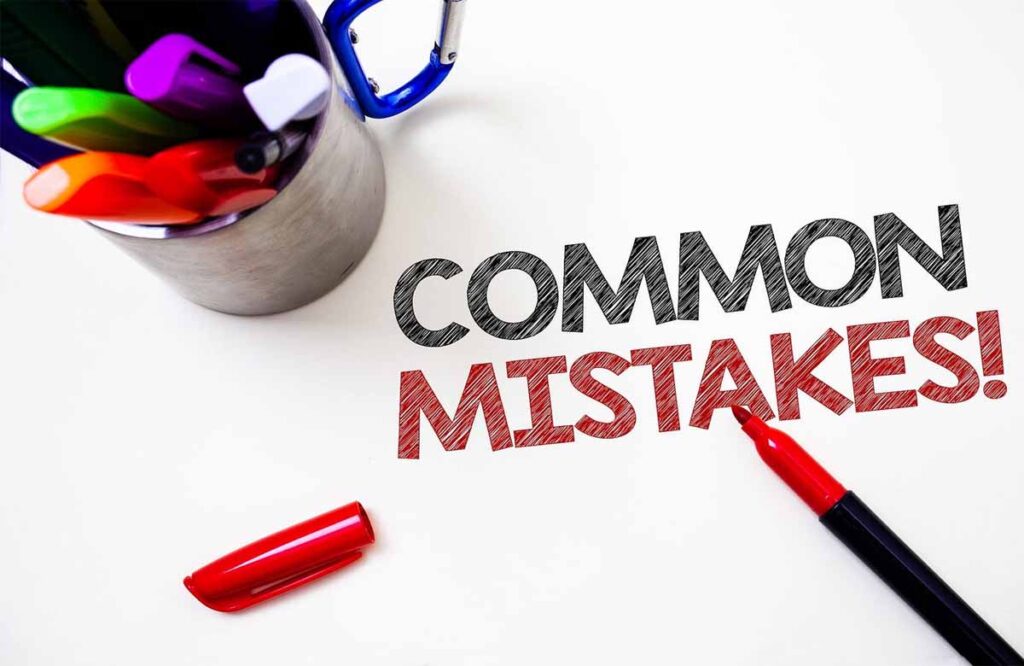
The biggest mistake? Treating Dubai like any other city. Using generic stock photos, irrelevant cultural references, or pricing strategies that ignore local purchasing power. Successful marketing ads in Dubai require cultural relevance, visual authenticity, and pricing that resonates with the local audience.
Another killer: Not testing Arabic versions of your ads. Even if your audience speaks English, Arabic ads often outperform English ones by 25-30% in certain demographics.
11. Advanced Targeting Techniques for Maximum Impact
The advertisement platforms of Dubai have highly advanced targeting capabilities. You can target visa status, salary range, shopping habits, and even Emirates or neighbourhoods.
Layer your targeting strategically. Avoid wide, open-ended groups such as “Dubai residents,” and attempt to come up with something like “High-income expats in Dubai Marina who buy and shop luxury brands and have bought similar products.” This level of precision is what makes marketing ads in Dubai truly effective.
12. Scaling Successful Campaigns Without Killing Performance
Once you find winning marketing ads in Dubai, the temptation is to pour all your budget into them immediately. Big mistake. Scale gradually, test different audiences, and monitor performance metrics closely.
Dubai’s market can shift quickly. What works in tourist season may not work in the summers. Optimization and adaptation are necessary in successful scaling.
Continue to experiment with applications and expand your winners, exploring new creative directions, audiences, and platforms. This will be profitable in the long run and not only in the short-run gains.
13. The Technology Stack That Powers High-ROI Campaigns
In order to track, optimize, and scale these modern marketing ads in Dubai, it takes advanced-level technology. It is the table stakes to have marketing automation, AI-driven bidding, dynamic creative optimization, and cross-platform attribution.
Companies, which continue to operate on fundamental tracking and manual optimization, are doing so with one hand behind their back. The technology investment pays for itself within weeks through improved performance.
14. Future-Proofing Your Dubai Marketing Investment
Dubai’s market evolves faster than almost anywhere else. What is effective this month may be out of date in the next quarter. Marketing ads in Dubai must be supported by campaigns and systems that are able to adjust themselves to new platforms, audience behaviors, and market conditions on time.
Those businesses that succeed in the competitive market of Dubai are those that view marketing as an investment strategy rather than a compulsory expenditure.
The Bottom Line: Your Dubai ROI Revolution Starts Now
Dubai’s digital advertising market is exploding at 6.36% annually, but only smart businesses are cashing in. The difference between profitable marketing ads in Dubai and burning money comes down to working with experts who actually know this market inside and out.
Digital Oasis doesn’t just talk about results—they deliver them.
- Google Ads (PPC) that convert like crazy.
- Social media marketing that builds empires.
- Search engine optimization that dominates rankings.
- Email marketing that prints money.
- Mobile marketing that captures Dubai’s mobile-obsessed audience.
- Conversion Rate Optimization that turns browsers into buyers.
- Brand building that creates legends.
Ready to stop losing money? Let’s talk.
Top 12 Strategies for Google Paid Advertising in Dubai to Outrank Your Competitors
Google paid advertising in Dubai has evolved significantly in recent years — and staying ahead requires adapting smart strategies. With insights drawn from working with over 1,000 clients annually, the experts at Digital Oasis refined a robust, proven playbook.
This guide breaks down our current, high-impact approach to Google paid advertising in Dubai for both novices and seasoned advertisers. By the end, you’ll know exactly how to set up efficient campaigns that drive conversions and what experienced marketers should do next.
Why Google Paid Advertising is Crucial for Your Business in Dubai
Google paid advertising in Dubai is a powerful tool for businesses to increase visibility, drive traffic, and ultimately outshine competitors. By strategically using Google Ads, businesses can target specific audiences, optimize campaigns, and achieve measurable results. Let’s explore the top 12 strategies that can help you maximize your success in Google paid advertising in Dubai..
1. Launch Smart: Start with a Modest Budget
Many businesses jump in, assuming with $2,000 they’ll be profitable within 20 days—but that expectation overlooks the steep Google Ads learning curve. When you begin, you’re essentially running blind. A smaller daily budget—say $10–$50 (AED ~40–200)—spread out over two to four months gives you a runway to test offers, refine keywords, and find what converts best.
Everyone’s “sweet spot” budget differs: small startups may feel the impact with minimal spending, while large corporations might need to invest thousands daily for Google paid advertising in Dubai. The key is balance—choose a budget significant enough that you care about performance but low enough to absorb early inefficiencies.
2. Beginner Tip: Focus on Search Campaigns First
As a beginner to PPC advertising services in Dubai, it’s tempting to set up Display, Shopping, or YouTube campaigns right away. Resist the urge—start with home turf: Search campaigns. This approach is clear and powerful: your ads respond to real user queries. It’s straightforward to track, easy to manage, and, once performance improves, offers a solid base to layer other campaign types on top.
Think of Search campaigns as your training wheels for your first Google paid advertising in Dubai. Once you build data and confidence, you can confidently introduce display, video, or shopping ads—but only when your model is solid.
3. Use Smart Bidding from Day One
Gone are the days of maximizing clicks or focusing on impressions alone. Today’s Google Ads platform—especially for certified Google Ads experts in Dubai—favors intelligent bidding. Utilizing bidding strategies like Maximize Conversions and Maximize Conversion Value from day one helps Google’s AI target the right users to drive real actions and value.
While conventional wisdom once advocated for conservative bidding with explicit conversion data, Google’s algorithms now predict conversion behavior effectively even with limited data—thanks to historical signals across industries. Our testing team confirms that smart bidding consistently outperforms click-focused strategies even in new accounts.

4. Sell One Offer Really Well
If you offer multiple services or products, your ad budget and tracking efforts can easily become fragmented. Focus on one high-value, profitable offer—perhaps your signature service or your highest-margin product. When you concentrate budget and bidding power on a single campaign, you gather meaningful data faster and achieve a useful ROI.
Once that offer is profitable and optimized, you can reinvest results to trial additional offerings or introduce remarketing funnels. Many e-commerce brands begin this way—drive initial acquisition on their best product, then upsell or cross-sell via email or retargeting.
5. Time to Scale: Enter Performance Max
When your account surpasses roughly 100 conversions, it’s time to scale. That’s when Performance Max becomes a powerful tool. Think of it as the all-in-one campaign wrapper that unifies Search, Display, YouTube, Shopping, and Discovery campaigns.
- It connects seamlessly with existing search data.
- It engages users across multiple ad networks automatically.
- It introduces remarketing functionality effortlessly.
- It adapts dynamically based on Google’s data signals.
Performance Max can significantly improve results for your Google paid advertising in Dubai—but only if it’s built on strong creative assets and grounded in high-quality conversion data.
6. Quality Creatives Are Essential
It’s tempting to move fast: some inexpensive images and videos can be rushed together in Canva. But poor creatives damage performance—especially in Performance Max, where visuals matter.
You need high-quality images and videos aligned with your branding standards. Lackluster creatives undercut even the best bids and campaign setups. A Google Ads agency in Dubai, like Digital Oasis, with creative design capabilities can save you from underperformance by delivering polished, engaging ad assets.
7. Lower CPCs = Better ROI
Even with flashy campaigns, the fundamentals still matter. Keep a sharp eye on your cost per click (CPC), always seeking to improve efficiency. Every unit cut from CPC can magnify your ROI significantly.
Use smart bid adjustments, campaign optimizations, and A/B testing to refine performance consistently for your Google paid advertising in Dubai. Lower CPC equals more qualified traffic for the same budget—driving profit without raising spending.
8. What Experienced Advertisers Should Do Differently
- Track 100+ conversions to build reliable bidding models.
- Launch Performance Max once data crosses the threshold.
- Avoid premature scaling until creatives, offers, and tracking are reliable.
- Layer strategies: combine Search with Performance Max and audience retargeting.
Seasoned advertisers remember: even powerful campaigns can fail with poor execution. The solution is strong foundations.
9. The ROI of a Certified Google Ads Expert Dubai
The choices you make early—from bidding strategy to campaign structure—can make or break results. A certified Google Ads expert in Dubai brings proven knowledge, insights from global clients, and skillful execution.
- Spend less experimenting
- Avoid rookie mistakes
- Build campaigns that are primed to scale efficiently
Partnering with experienced professionals leverages their test results, performance benchmarks, and insider tips—accelerating your success.

10. Bring It Together with Paid Search Marketing Dubai
Your campaign is only as strong as its integration. Paid strategies must align with your landing pages, tracking, and broader marketing channels. Good paid search marketing in Dubai isn’t just launching ads—it links search user intent to your website experience and back-end funnel optimization.
Work with a partner who supports
- Seamless Google Ads-to-website integration
- Conversion tracking, pixel installation
- Landing page A/B testing
- Cross-channel promotion (e.g. email retargeting)
That’s how you truly maximize ad spend and outperform the competition for your Google paid advertising in Dubai.
11. The Digital Oasis Difference
At Digital Oasis, we blend Dubai local market expertise with global campaign excellence. Our full-service offering includes:
- Account setup, structure, and keyword research
- Strategic budgeting, bid management, and pacing
- Performance Max and search campaigns tailored to your stage
- Impactful visuals and video ads for maximum engagement
- Constant CPC optimization and layered retargeting
- Transparent reporting, insights, and quarterly scaling plans
Our certified professionals are ready to elevate your paid search game—with proven results, flexible packages, and an inbound-first mindset.
12. Is Google Paid Advertising in Dubai Right for You?
If you’re launching offerings, scaling a business, or claiming limited visibility, the strategies here will help you succeed. But the real lever is execution: aligning budgets, creatives, tracking, and strategy.
Digital Oasis is more than an agency: we’re your growth partner. From setup to scale, across ad types and audience management, we specialize in Google paid advertising in Dubai, backed by best practice Certified Google Ads Experts. The result? Efficient ad spends, consistent growth, and accelerated business outcomes.
Want Results? Let’s talk.
Take the guesswork out of your PPC strategy—and turn ad spend into real growth. Reach out to Digital Oasis today for a free consultation on Google paid advertising in Dubai. Let’s map your path to outranking and outperforming competitors.
Top 10 Marketing Agencies in Dubai | 2025 Reviews
It can be hard to look for the right digital marketing company when you’re already bursting with fresh ideas. Do you want to find the best marketing agencies in Dubai?
To be honest, in 2025, having a digital marketing strategy is totally required, not optional. As long as people are looking for things online and your brand isn’t noticeable there, you’re hard to find.
Your Shortcut to the Top Digital Marketing Agencies in Dubai
Just in Dubai alone, you’ll find over 3,900 digital marketing agencies in Dubai ready to make your business vibrate in the industry. Not to mention that we don’t want you to get a headache from sifting through all of them.
This is why we have compiled a list of the top 10 digital marketing agencies in Dubai based on their Clutch Co. ranking, employee count, website traffic, client success, and certain other criteria.
Let’s dive deep in.
1. Digital Oasis
Clutch Co. Score: 5.0 stars, 47 reviews
Out of the 10 marketing agencies in Dubai, this agency specializes in helping innovators succeed in their industry through a wide range of digital marketing and a result-oriented data approach.
Digital Oasis, the leading marketing agency in Dubai in 2025, is famous for its forward-thinking tactics, superior creative work, and consistent success in delivering great ROI. Digital Oasis supports startups creating their brands and big companies looking to grow in the MENA region with unique solutions for each business. Committed to making clients happy, driving growth, and keeping things transparent, Digital Oasis is the partner of choice for ambitious companies.
- Services Offered: Performance marketing, paid ads (Google Ads, Meta, TikTok), SEO, web development, content marketing, eCommerce growth strategy, Amazon marketing, and influencer marketing.
- Global Reach: Based in Dubai with international clients across the U.S., Europe, and the Middle East.
- Rates: Projects start around $2,000; hourly rates range from $75–$149.
- Clients: 600+
- No. of Employees: 85+
- Organic Web Traffic: 12K+
| Pros | Cons |
| Award-winning campaigns with tangible ROI and KPIs. | Due to high demand, onboarding new clients may involve short wait periods. |
| Boutique service style with enterprise-level results. | |
| Dedicated account managers and weekly performance insights. |
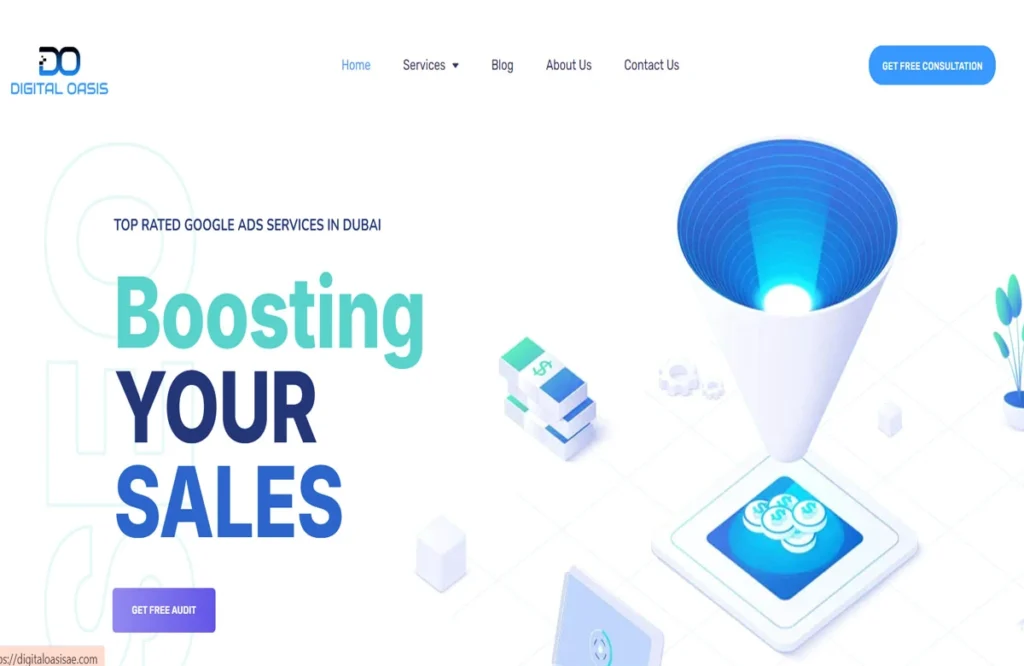
2. Nexa
Clutch Co. Score: 4.8 stars, 32 reviews
Perfect for mid-sized to large businesses that need scalable digital marketing strategies.
Nexa is one of the top marketing agencies in Dubai and has assisted companies in growing since 2005. They work closely with HubSpot as a Diamond partner, bringing years of knowledge to inbound marketing, lead generation, and connecting CRMs. Nexa’s main power is bringing sales and marketing together to generate actual business growth.
- Services Offered: Inbound marketing, SEO, PPC, social media management, CRM implementation, website development, and video production.
- Global Reach: Offices in Dubai, Manchester, and New York.
- Rates: Minimum project size of $5,000; hourly rates $100–$149.
- Clients: 800+
- No. of Employees: 100+
- Organic Web Traffic: 7.5K+
| Pros | Cons |
| Strong expertise in B2B and SaaS sectors. | Pricing might be steep for smaller startups. |
| Certified HubSpot and Google Partners. | Their onboarding process can take a few weeks. |
| Excellent post-project support and documentation. |
3. Igloo
Clutch Co. Score: 4.9 stars, 19 reviews
Great for SMEs looking for hands-on support and high ROI from performance marketing campaigns.
Igloo is a performance-first digital marketing agency that combines creativity with data to scale brands. In the UAE, they’re trusted for designing advertising campaigns that give good returns on investment.
- Services Offered: PPC, SEO, social media marketing, email marketing, and web design.
- Global Reach: Primarily UAE-focused with some clients across the GCC.
- Rates: Starting from $1,000; hourly rates between $50–$99.
- Clients: 500+
- No. of Employees: 60
- Organic Web Traffic: 5K+
| Pros | Cons |
| Strong local market insights. | Limited global outreach compared to larger firms. |
| Transparent reporting and budget management. | Smaller team size may not suit large enterprise projects. |
| Responsive customer support. |
4. Digital Gravity
Clutch Co. Score: 4.7 stars, 24 reviews
Tech startups, app companies, and businesses after UX/UI design will find Digital Gravity very helpful.
Digital Gravity is one of the standout marketing agencies in Dubai, known for its emphasis on stunning design and intuitive user experiences. There are full-stack developers and digital strategists on the team, responsible for building top-notch digital solutions and marketing plans.
- Services Offered: Branding, web design, mobile app development, digital marketing, and SEO.
- Global Reach: Primarily based in Dubai with clients across the GCC.
- Rates: Project minimum is $2,500; hourly rates are $75–$125.
- Clients: 350+
- No. of Employees: 70+
- Organic Web Traffic: 3.5K+
| Pros | Cons |
| High-end branding and creative direction. | More focused on design and branding than full-scale marketing. |
| Excellent app and web development. | Limited international footprint. |
| Suitable for innovative tech brands. |

5. Chain Reaction
Clutch Co. Score: 4.8 stars, 29 reviews
Ideal for businesses that need a data-driven approach to marketing and multilingual content strategies.
Chain Reaction has established itself as a performance marketing agency with a serious flair for analytics, localization, and multilingual content creation. Their proprietary tools help businesses better understand customer behavior and optimize accordingly.
- Services Offered: SEO, content creation, PPC, performance marketing, CRO, and analytics.
- Global Reach: Offices in Dubai, Riyadh, Amman, and Cairo.
- Rates: Starting at $3,000 per
- project; hourly rates $75–$100.
- Clients: 1,000+
- No. of Employees: 120
- Organic Web Traffic: 6K+
| Pros | Cons |
| Multilingual SEO and content production. | Might be too technical for non-data-savvy clients. |
| Data-first campaign execution. | High entry-level project cost for small businesses. |
| Advanced analytics and tracking tools. |
6. United SEO
Clutch Co. Score: 4.6 stars, 21 reviews
Perfect for companies that prioritize SEO and local digital visibility in the UAE.
United SEO stands out among Dubai’s top marketing agencies in Dubai for its laser focus on search engine optimization. They’re results-driven and offer affordable packages for small to mid-sized businesses.
- Services Offered: SEO, Google Ads, social media marketing, and reputation management.
- Global Reach: Offices in UAE and Australia.
- Rates: Starting at $800 per month; hourly rate not publicly disclosed.
- Clients: 400+
- No. of Employees: 55+
- Organic Web Traffic: 4.2K+
| Pros | Cons |
| Deep expertise in technical and local SEO. | Smaller scope of services beyond SEO. |
| High client retention rate. | May not suit companies seeking full-stack marketing solutions. |
| Affordable monthly SEO plans. |
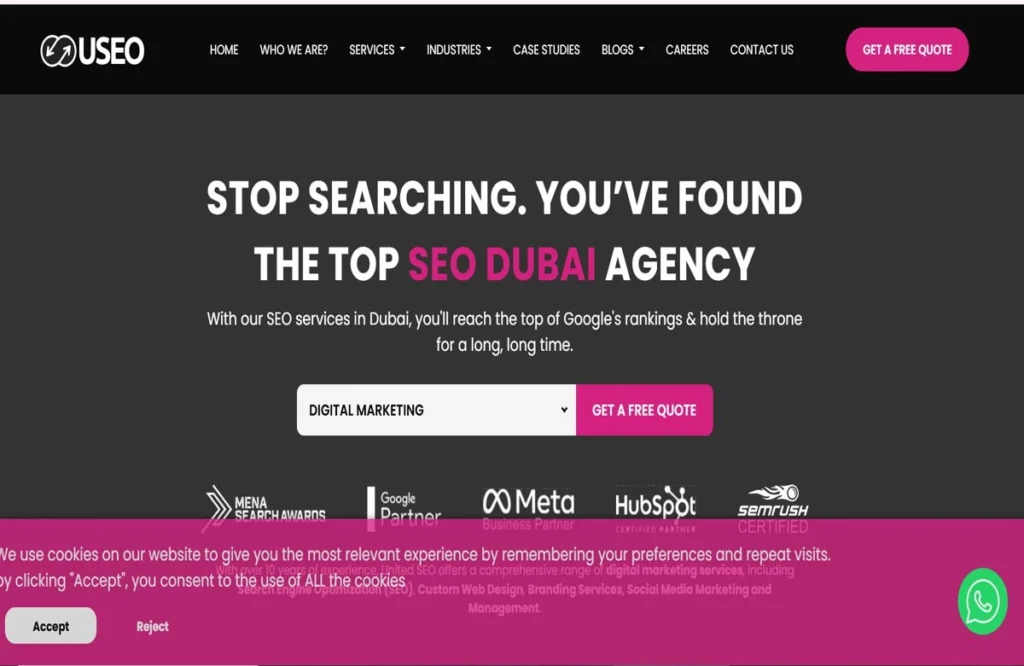
7. Amplify Dubai
Clutch Co. Score: 4.9 stars, 14 reviews
This digital marketing agency is best for companies seeking a creative agency with digital storytelling capabilities.
Amplify blends creativity with marketing effectiveness, producing campaigns that not only convert but also tell compelling brand stories. Their background in film and media makes them particularly strong in video and content production.
- Services Offered: Digital marketing, branding, video production, content creation, social media strategy.
- Global Reach: Based in Dubai with clients in Europe and the Middle East.
- Rates: Custom pricing based on project scope.
- Clients: 200+
- No. of Employees: 40+
- Organic Web Traffic: 2K+
| Pros | Cons |
| Visual and narrative excellence. | Smaller team than full-scale agencies. |
| Unique blend of media and marketing expertise. | Not ideal for data-heavy or technical campaigns. |
| Great for lifestyle, luxury, and FMCG brands. |
8. Red Berries
Clutch Co. Score: 4.7 stars, 22 reviews
Ideal for anyone who is looking for good value and wants clear, honest services in their campaigns.
Red Berries, a boutique digital marketing agency in Dubai, offers tailored approaches and a lot of hands-on help. They provide excellent marketing services at rates that are easy on your budget.
- Services Offered: Web design, SEO, PPC, social media marketing, and email campaigns.
- Global Reach: Primarily UAE with some presence in India.
- Rates: Starts at $500/month; hourly rate approx. $40–$75.
- Clients: 300+
- No. of Employees: 35+
- Organic Web Traffic: 3K+
| Pros | Cons |
| Affordable pricing for small businesses. | Smaller scale limits enterprise-level execution. |
| Flexible and customized service packages. | Limited geographic reach. |
| Transparent reporting and campaign reviews. |
9. USEO (United SEO)
Clutch Co. Score: 4.8 stars, 26 reviews
A good choice for companies wanting an all-round digital agency with a focus on SEO.
The USEO agency specializes in digital marketing and has a lot of experience helping brands expand naturally. The team works on steady, future-oriented SEO strategies and sustainable expansion.
- Services Offered: SEO, PPC, social media, and web development.
- Global Reach: Based in Dubai with a presence in Australia and the UK.
- Rates: Starting at $1,200/month; hourly rates vary.
- Clients: 600+
- No. of Employees: 80+
- Organic Web Traffic: 4.8K+
| Pros | Cons |
| Excellent for long-term SEO planning. | Not ideal for businesses needing quick-turn branding or creative work. |
| Strong technical SEO and link-building expertise. | Some packages require long-term commitment. |
| Results-oriented with measurable KPIs. |
10. Grow Combine
Clutch Co. Score: 4.6 stars, 18 reviews
This digital marketing agency is a smart choice for small-to-mid-sized businesses looking for tailored strategies and affordable rates.
Grow Combine combines strategic planning with digital execution. Because they are quick, flexible, and concentrate on ROI, they attract many new companies and services in the community.
- Services Offered: SEO, branding, digital strategy, social media, Google Ads, and content marketing.
- Global Reach: UAE, India, and Canada.
- Rates: Projects start at $1,000; hourly rates range from $50–$90.
- Clients: 250+
- No. of Employees: 30+
- Organic Web Traffic: 2.3K+
| Pros | Cons |
| Personal approach with direct access to founders. | Limited bandwidth for enterprise-grade projects. |
| Fast turnaround and campaign execution. | Creative capabilities may not match larger competitors. |
| Affordable pricing. |
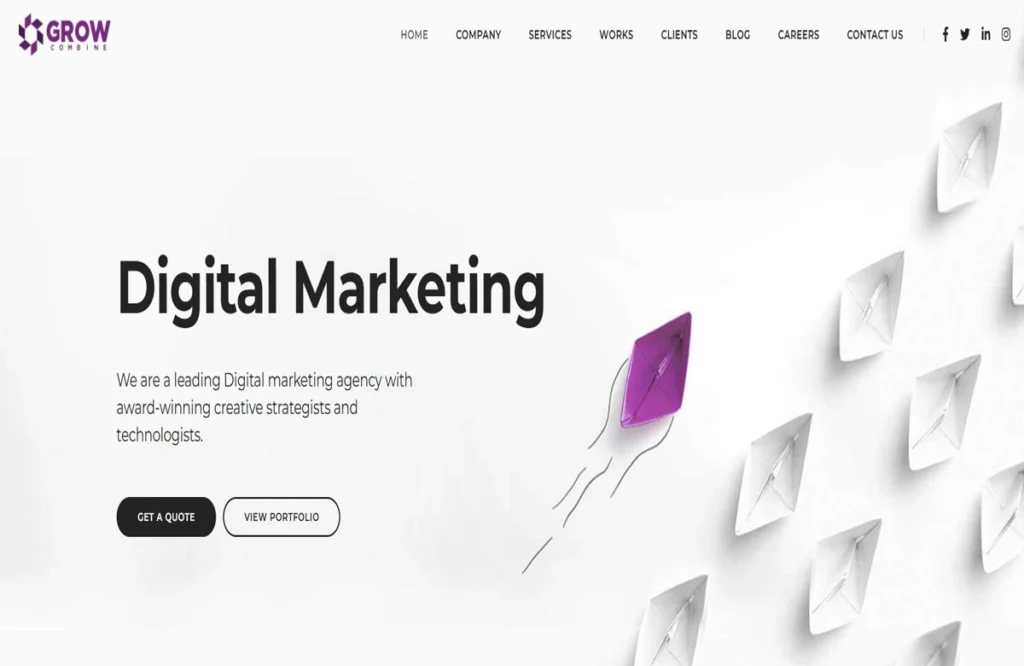
Conclusion
Working with an effective marketing agency in Dubai can really boost your brand’s fortunes. Whether your business is just starting out and needs end-to-end digital assistance, or if you’re a big enterprise with a need for specialized SEO, branding, or performance marketing, the agencies featured here offer unique skills and experience. Global names of marketing agencies in Dubai such as Digital Oasis sit alongside regional specialists, so organizations of any size and industry will find what they need at varying price points.
Out of all the choices, Digital Oasis is considered the top option for a good reason. They have shown time and again that their experience, data-supported methods, and deep knowledge of global and regional markets give their clients the custom solutions they need to succeed in today’s competitive setting. Because they prioritize openness, strong results, and constant innovation, they are a perfect match for companies expecting real growth over the long te
Top 5 Creative and Advertising Companies in Abu Dhabi, UAE
Looking for the top advertising companies in Abu Dhabi? You came to the right place. If you are introducing a new product, expanding your business or trying to reach new masses, employing the right creative and marketing brains can work wonders. Abu Dhabi has witnessed a rapid increase in the advertising scene, where both established and dynamic newbies have been producing standout results.
In this blog, we will guide you on the best 5 advertising agencies in Abu Dhabi that guarantee you credible and captivating campaigns, compelling branding and comprehensive marketing solutions. These are not companies that build brands; they are brains that are remodelling industries, the UAE’s highly competitive marketing spaces.
1. Digital Oasis
Perfect for: Brands looking for full-spectrum creative and advertising solutions with digital precision.
It is widely agreed that Digital Oasis is one of the top advertising companies in Abu Dhabi and the UAE. Taking ideas and originality into account, Digital Oasis helps businesses increase their growth rapidly and smartly. There is a group of branding experts, digital strategists, content creators, and performance marketers working as a team for their customers.
What Do They Offer?
- Creative advertising and campaign development
- Brand strategy and identity
- Digital marketing and SEO
- Video production and motion graphics
- Website and app development
Why Are They One of the Best?
The company not only stands out in marketing for its clients in the UAE, but is entrusted by them to be a partner year after year. They look closely at data, prioritize their clients, and check that their solution aligns with the company’s aims.
Due to having offices in both Abu Dhabi and Dubai, Digital Oasis leads the advertising industry in Abu Dhabi now and will do so well into the future.

2. BrandMoxie
Perfect for: Integrated brand strategy and community-based campaigns
BrandMoxie is a popular advertising company in Abu Dhabi that uses many strategies to engage with the local community. Bringing her visionary branding expertise, Sana Bagersh manages BrandMoxie in such a way that it develops stories for brands with clear and focused intentions.
What Do They Offer?
- Branding and positioning
- Event marketing and activation
- PR and corporate communications
- Advertising and digital content
- Social impact campaigns
Why Are They One of the Best?
BrandMoxie was the driving force behind initiatives like Tamakkan, Tempo Magazine, and The Dream Players. Because they prioritize community and do so with local values, they are one of the top agencies for creating meaningful advertising campaigns.
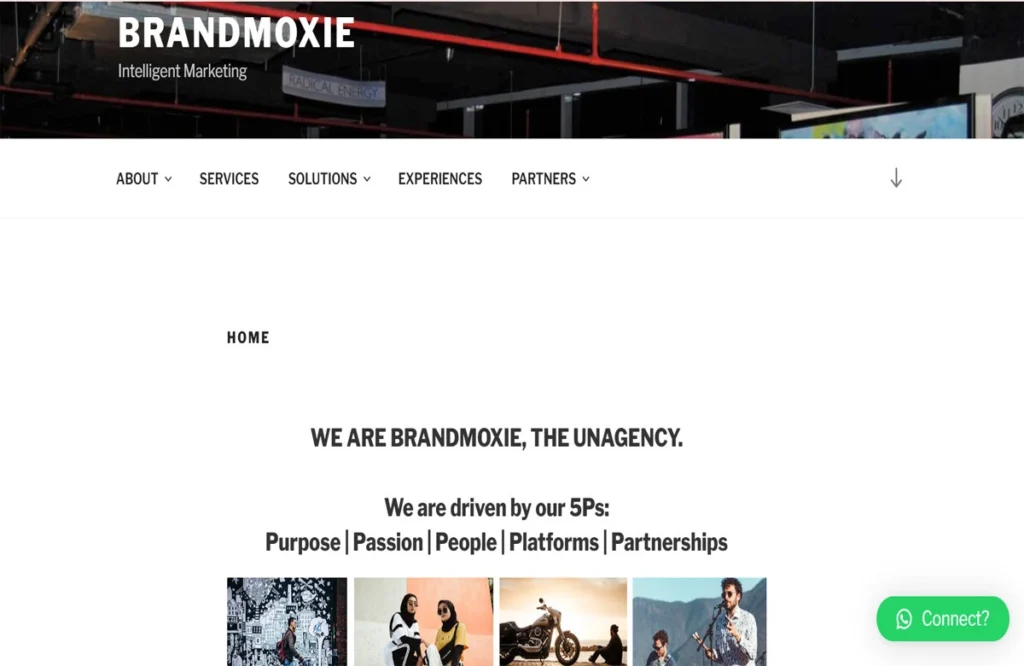
3. Eleven777 Advertising
Perfect for: Creative visual campaigns and media planning
Eleven777 specializes in creative work and has partnered with leading regional and worldwide companies. Their power comes from making advertising campaigns that use both great visuals and good storytelling.
What Do They Offer?
- Creative campaign development
- Media buying and planning
- Motion graphics and animation
- Corporate identity creation
- Outdoor and indoor advertising
Why Are They One of the Best?
This marketing agency has gained attention among the advertising agencies in the UAE by regularly providing creative advertising that stands out both online, in print, and outdoors in the UAE context.
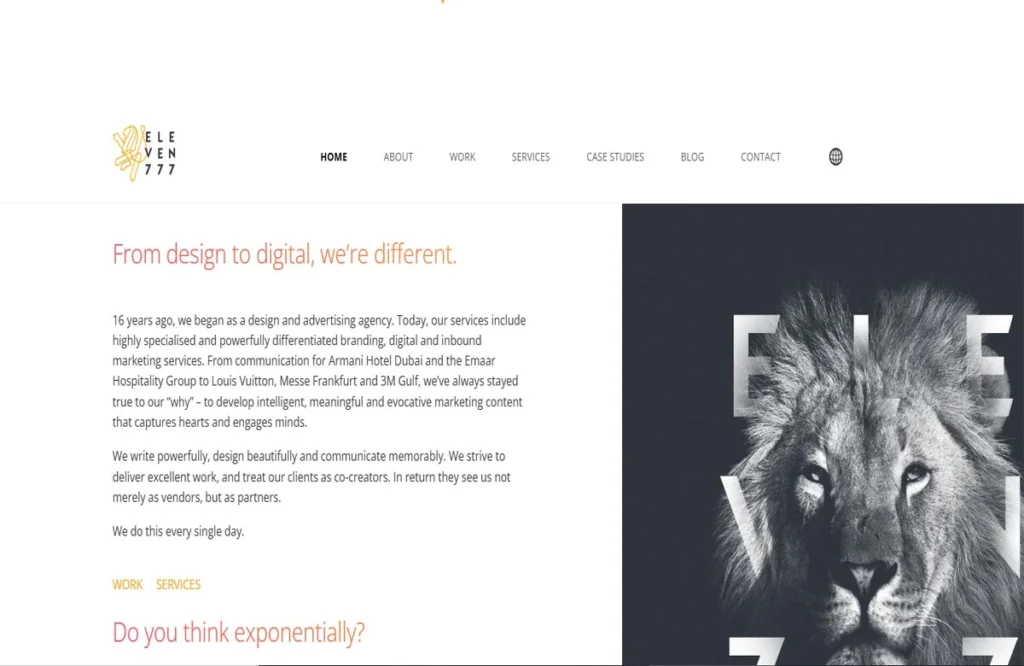
4. Pikadot Life
Perfect for: Startups and small businesses looking for full-service creative support
Pikadot Life makes use of creativity and strategy to help SMEs with strong marketing results. Known for their collaborative approach, Pikadot Life is often recommended for entrepreneurs looking to craft brand identity and advertising from the ground up.
What Do They Offer?
- Graphic and web design
- Social media marketing
- Video production and editing
- Branding strategy and consulting
Why Are They One of the Best?
The combination of creativity and strategy from Pikadot means that startups with limited funding find Pikadot one of the best advertising companies in Abu Dhabi for branding.
5. MullenLowe MENA (Abu Dhabi Office)
Perfect for: Large enterprises and government campaigns
MullenLowe covers both global and regional markets through its network of marketing and advertising teams. The Abu Dhabi office of their agency has won awards for their campaigns with government bodies, large companies, and global brands.
What Do They Offer?
- Creative advertising
- Data-driven marketing campaigns
- Brand strategy and transformation
- Experiential marketing
- Performance analytics
Why Are They One of the Best?
MullenLowe MENA enjoys a reputation for being courageous in its creative work and savvy with its strategies. They’re a big player in Abu Dhabi advertising and are recognized across the UAE’s marketing scene as well.
6. Tonic International (UAE-wide, with Projects in Abu Dhabi)
Perfect for: Integrated campaigns across branding, media, and digital
Tonic is a branding and digital agency that has done award-winning work for brands across the UAE, including several notable Abu Dhabi-based projects. They bring a strong mix of strategy, creativity, and performance to the table.
What Do They Offer?
- Branding and rebranding
- Digital advertising
- Search and SEO strategy
- Paid media and content
- Full creative services
Why Are They One of the Best?
The experience Tonic has in releasing and expanding marketing campaigns on different platforms makes them one of the best choices in the UAE for advertising companies in Abu Dhabi and complex marketing work with accurate results.
What to Consider When Choosing an Advertising Partner in Abu Dhabi?
Before you jump in, ask yourself a few important questions:
- What are your campaign goals? Are you looking to drive more purchases, build your brand image, or introduce a new business?
- What kind of budget are you working with? While a few agencies start their projects at a minimum of AED 5,000, some companies ask for a bigger retainer.
- Do you need a specialized service? For example, if you need branding from scratch, agencies like Tonic or Pikadot may be ideal. For community engagement, BrandMoxie shines.
- What’s the agency’s track record? Look at their case studies, client testimonials, and awards.
- How involved do you want to be? Some agencies are very collaborative, while others offer more of a done-for-you experience.
Final Thoughts: Why These Are the Best Advertising Companies in Abu Dhabi
Each advertising company presented in this list is a mix of creative, strategic, and local knowledge for the Abu Dhabi market. If you’re just beginning as a startup, or if you want your brand to grow with statistics, these agencies will do wonders for your marketing efforts.
The finest advertising companies in Abu Dhabi focus on more than advertising; they design brand experiences that communicate well and spark real business results.
Need Help Finding the Right Fit?
Want to find a team that understands your brand and ensures regular financial returns? When you require digital ads, a whole brand transformation, or offline campaigns, these advertising companies in the UAE have what it takes to achieve your goals.
If what you want is a partner that integrates innovation, strong performance, and deep insights into the market, Digital Oasis is for you. Having helped brands stand out and engage their audiences, they offer much more than advertising; they become your growth partners in the UAE’s ever-changing advertising world.
Excited to bring your brand’s vision to life? Get started with Digital Oasis today.
Setup and Run Your First Google Ads Campaign in Dubai
If you’re new to digital marketing and want to generate leads and sales online, Google Ads is a powerful tool that is one of the best choices at your disposal. Start your first google ads campaign in Dubai, but of course it’s so overwhelming for you.
In this blog post, we’ve put together a comprehensive walkthrough by an experienced digital marketer that walks through every step of setting up and running your very first google ads campaign in Dubai—from account creation to optimization! We have already created a post on how to optimize your Google Ads in 2025. You can go through it to learn advanced tips and tricks.
Whether you’re a small business owner, a solo entrepreneur, or simply interested in digital advertising, this guide can teach you all about what it takes to start up your campaigns.
Step 1: Create Your Google Ads Account
To get started, go to ads.google.com and sign in with a Gmail account. Click “Start now” and you’ll be prompted to create your first campaign right away. However, this is the Smart Mode version of Google Ads, which limits control and customization.
We want to use Expert Mode for full control. Look for the small link that says “Switch to Expert Mode” and click that.
Once in Expert Mode, choose “Create an account without a campaign.” This will let you access your full Google Ads dashboard before creating anything.
Fill in your billing country, time zone, and currency, then click “Submit.” Your Google Ads account is now live and ready to go.
Step 2: Create a New Campaign
Click the blue “+ New Campaign” button in the dashboard. You’ll be prompted to select a campaign goal. While options like Sales, Leads, and Website Traffic are available, choose “Create a campaign without a goal’s guidance.” This ensures you don’t get auto-suggestions that limit customization.
Next, select the campaign type. For most new advertisers, Search is the best place to start—it shows your ads on Google Search results.
Click “Continue.”
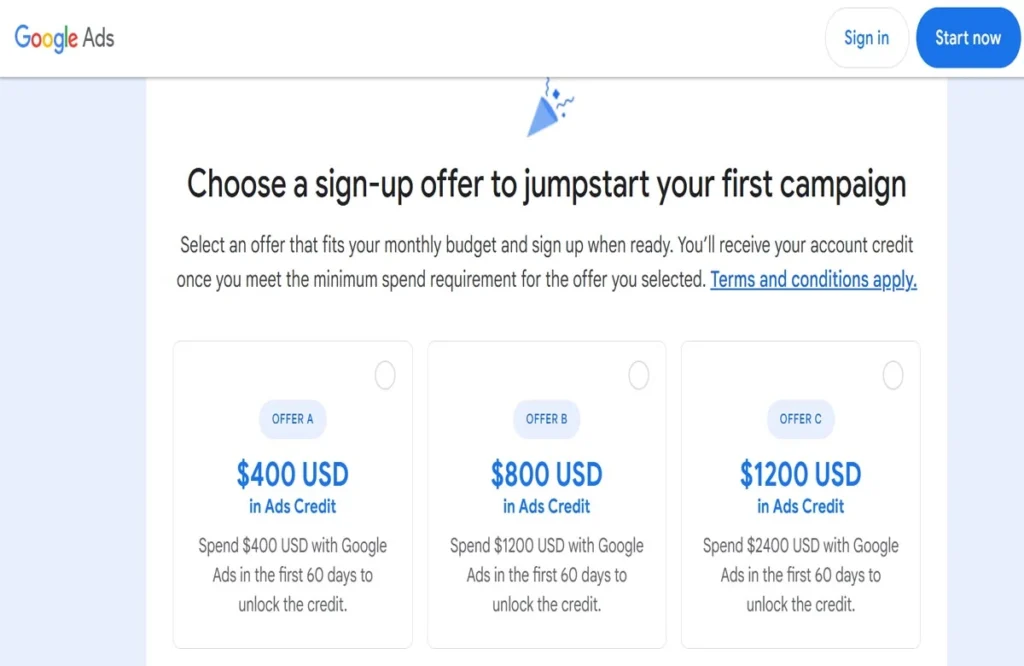
Step 3: Set Up Campaign Settings
Now name your campaign. Choose something clear and descriptive—e.g., “April 2025 Google Ads Test.”
Untick the checkboxes for Display Network and Search Partners. These placements can be helpful in some campaigns, but they’re not ideal when you’re starting and want to control your spending.
Next, choose locations. If you are serving clients in some specific area, click the “Enter another location” tab and fill in the city, region, or radius you wish. Next, go to “Advanced Search” > “Radius” and enter your local targeting radius (20 miles around your city, for example).
Under Languages, keep English selected (or add any relevant languages).
Scroll to Budget and Bidding.
- Daily Budget: Set something conservative if you’re just starting—say $10/day.
- Bidding Strategy: Choose “Clicks” and tick “Set maximum cost per click bid limit.” Start with something like $1 or $2 depending on your niche.
Skip “Ad Rotation” for now.
In More Settings, click on “Ad Schedule.” Only show your ads during business hours. For example, if you’re available Monday–Friday from 9 AM to 6 PM, set those times to prevent wasting ad spend.
Click “Next.”
Step 4: Set Up Ad Groups and Keywords
Ad Groups organize your ads around themes or services. For example, if you’re a locksmith, you could have Ad Groups like “Emergency Locksmith,” “Residential Locksmith,” etc.
Name your first Ad Group (e.g., “Emergency Locksmith”). Then enter relevant keywords manually. Avoid using Google’s suggestions—they’re often too broad.
Use keyword match types:
- Broad Match: No symbols (e.g., locksmith near me)
- Phrase Match: Use quotes (e.g., “locksmith near me”)
- Exact Match: Use square brackets (e.g., [locksmith near me])
For a new campaign, focus on phrases and exact match keywords to keep your targeting tight and relevant.
Once you’ve added 10–20 targeted keywords per Ad Group, click “Next.”
Step 5: Create Your Search Ads
Now you’ll write the ads that will show on Google search results.
Final URL: Enter the landing page where visitors will go when they click your ad.
Display Path: This is what appears after your domain. For example, if your domain is example.com, you could write locksmith/emergency as the display path.
Headlines (you can write up to 15): These rotate, so create variations:
- Emergency Locksmith in [City]
- 24/7 Locksmith Services
- Fast Response – Call Now
- Affordable Locksmith Near You
Descriptions (up to 4): Focus on benefits and call-to-actions:
- “We provide fast, reliable emergency locksmith services across [City]. Call now for a free quote!”
- “Locked out? We can help in minutes. Licensed & insured locksmiths on standby.”
Use as many headline and description variations as possible. Google will automatically test and rotate them to find what performs best.
Click “Done” and then “Next.”
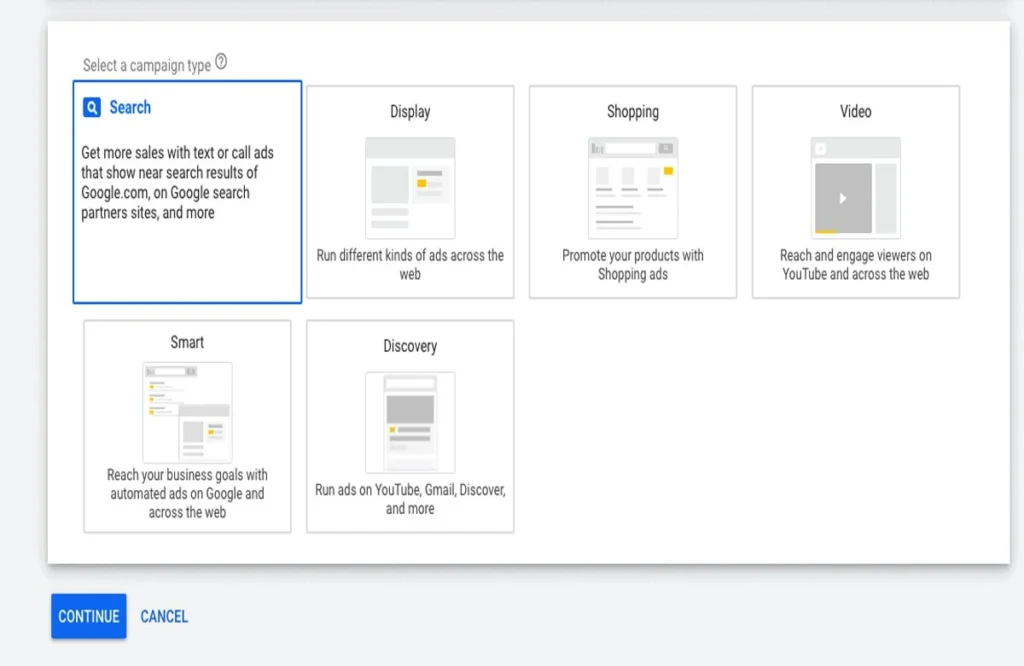
Step 6: Review and Launch
You’ll now see a summary of your campaign settings:
- Campaign Name
- Type: Search
- Networks: Search only
- Locations: Custom radius or region
- Budget and bidding
- Keywords by Ad Group
- Ad variations
Double-check everything. Then click “Publish Campaign.” Your ads will now go through a short review process before going live.
Step 7: Monitor Campaign Performance
Once your campaign is running, it’s important to monitor key metrics like:
- CTR (Click-Through Rate)
- CPC (Cost Per Click)
- Conversions
- Search terms
Use the dashboard to pause underperforming keywords, increase bids on top performers, and refine your ad copy.
You can also segment performance by device, location, and time of day to find optimization opportunities.
Don’t expect perfect results overnight—optimizing a google ads campaign in Dubai is an ongoing process.
Pro Tips for First-Time Advertisers
Though I have already told you in the start of the blog about our advanced Google ad optimization tips in 2025. But for the sake of summarizing them, the advance tips are as follow:
1. Avoid Broad Keywords
Start with highly specific keywords to avoid irrelevant clicks. For example, instead of just “locksmith,” use [emergency locksmith Austin] or “24 hour locksmith near me.”
2. Use Negative Keywords
Block irrelevant searches using negative keywords. For example, if you don’t offer car locksmith services, exclude terms like “car key” or “auto locksmith.”
3. Track Conversions
Set up Google Ads conversion tracking using a snippet of code or via Google Tag Manager. This lets you measure what’s actually generating results.
4. Improve Your Landing Page
Ensure your website or landing page is optimized for conversions. Fast load times, mobile responsiveness, and clear CTAs (call to actions) are essential.
5. Keep Testing
Don’t just sit and forget. Test new headlines, ad copy, and keywords regularly.
6. Check the Search Terms Report Weekly
This shows what real users typed before clicking your ad. Use it to refine keyword matches and add new negative keywords.
7. Pause or Lower Bids for Low Performers
If a keyword is draining the budget without results, pause it or reduce its bid.
Final Thoughts
It might seem strange, but if you’ve ever tried to launch a google ads campaign in Dubai, you know that it can be challenging, but once you’ve got the hang of it, it can really be a force to be reckoned with when it comes to generating real leads and sales. With Expert Mode you can get really good results without spending a fortune, as long as you’re focused on accurate targeting, great ad copy, and tracking performance.
Just know that even the more experienced pros are still always testing, tweaking, and optimizing their campaigns—Google Ads doesn’t work with a set it and forget it mentality.
If you want to learn how to create your first campaign step by step just go and run ads that CONVERT.
Having more advanced optimization strategies or needing to have our campaign audited? At Digital Oasis, we help you maneuver through the sea of complicatedness of Google Ads. If you are just beginning your first campaign or planning on amplifying your current performance, Digital Oasis has the know-how and support necessary to turn your advertising dollars into serious ROI.
Contact us for further help.
10 Most In-demand Branding Agencies in the UAE for 2025
Seeking ways to elevate your brand presence in the UAE’s dog-eat-dog market? Regardless of whether you are a startup introducing a new identity or a great brand looking for a refresh, the selection of an appropriate branding agencies in the UAE is an important decision. The United Arab Emirates has become a powerhouse in the creative and strategic world of branding and in 2025, the competition is even more intense—and smart.
Under this list, we point out the 10 most demanded branding agencies in the UAE that businesses are running to this year. Dubai-based design agencies to full-service brand firms are turning ideas into iconic brand experiences.
Here we go into the best the UAE can offer.
1. Digital Oasis
Perfect for brands seeking strategy-first creative execution with measurable results.
Digital Oasis leads the pack as the best branding agency in Dubai in 2025. With data-centred strategies married to stylish creative deliverables, Digital Oasis has established a reputation for converting local and global brands in various industries. On their team, they have brand strategists, content producers, visual designers, and market analysts who combine their efforts to develop distinctive brand identities.
If you are rebranding your business or starting from scratch, their end-to-end process—starting with market research and ending with visual storytelling—will guarantee you get a brand that has clarity and consistency of voice.
- Services Offered: Brand strategy, visual identity design, digital marketing, brand positioning, packaging design, social media branding
- Global Reach: Offices in Dubai, London, and Riyadh
- Rates: Project-based, typically starting from $5,000
- Clients: Emirates NBD, Emaar, Careem, Chalhoub Group
- No. of Employees: 85+
- Organic Web Traffic: 18K+
Why Choose The Digital Oasis for Your Branding Needs?
- Strong strategic foundation with high creative output
- Deep knowledge of regional and global markets
- Specializes in tech, retail, hospitality, and government branding
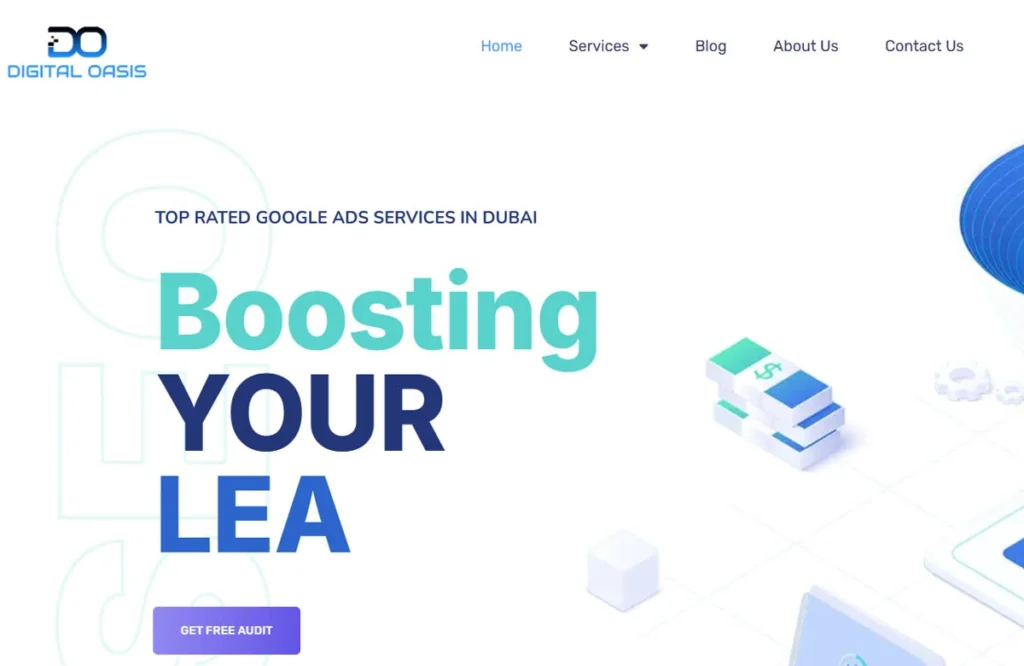
2. Brand Lounge
Great for companies focused on brand positioning and long-term growth.
Brand Lounge is one of the best branding agencies in the UAE that specializes in positioning and differentiation. They operate mainly with mid-sized and large businesses looking to rebrand the way their brand is viewed. With their strategy-first approach, brands don’t just look good—they’re meaningful.
- Services Offered: Brand strategy, visual identity, employer branding, naming, rebranding
- Global Reach: UAE and Saudi Arabia
- Rates: Starts around $10,000 per project
- Clients: Dubai Holding, Saudi German Hospitals, Al Ghurair
- No. of Employees: 50+
- Organic Traffic: 3.5K
What Makes The Brand Lounge Stand Out?
- Excellent for strategic brand architecture
- Strong experience in healthcare and government sectors
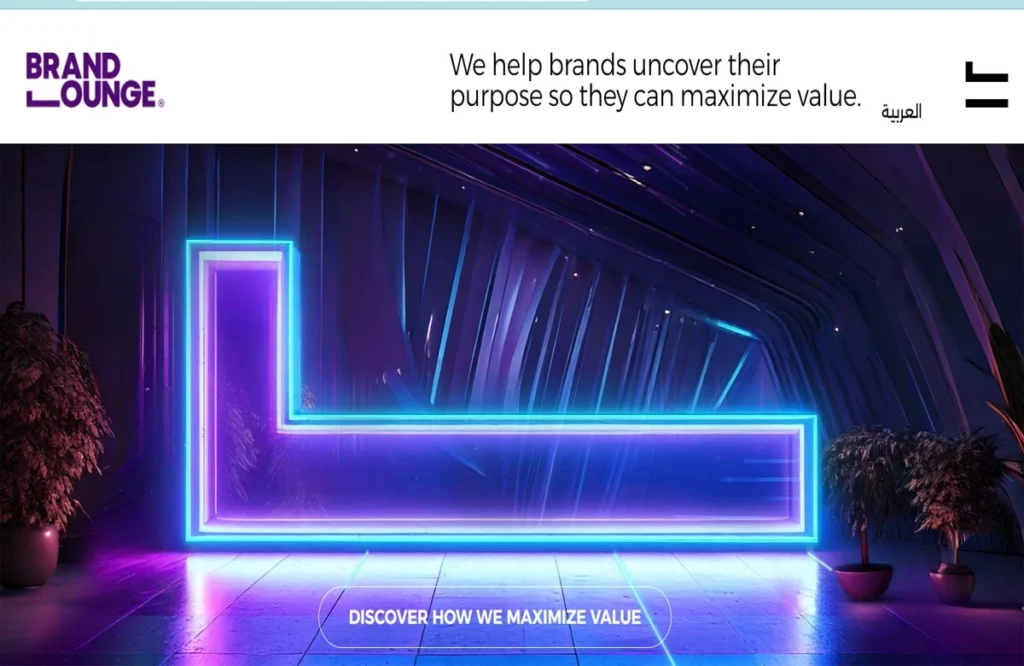
3. Brash
Perfect for high-profile real estate, hospitality, and government sector branding projects.
Brash is a global branding agency that is well entrenched in Dubai, it is known to work on the iconic developments and premium lifestyle brands. Their combination of strategic thinking and courageous creative leadership makes them a world-class partner for daring, high-profile ventures. Brash is one of the branding agencies in the UAE to consider that will provide outstanding identities for landmark ventures.
- Services Offered: Brand strategy, identity creation, placemaking, naming, brand architecture, digital experiences, and content development.
- Global Reach: Offices in Dubai, London, and New York
- Rates: Premium pricing with projects starting at $20,000+
- Clients: Dubai Holding, Emaar, DAMAC, Nakheel, Expo 2020
- No. of Employees: 50+
- Organic Web Traffic: 5K+
How The Brash Delivers Real Results?
- Exceptional portfolio with iconic UAE projects
- Strong creative and strategic leadership
- Experienced with international collaborations
4. Prototype Interactive
Best for tech-driven companies and digital product branding.
Prototype is one of the innovative branding agencies in the UAE that specializes in a human-centered design approach, making it the perfect match for tech companies and mobile app startups. They unite branding with UX/UI to create products that do not only look good but also sell well.
- Services Offered: Branding, UX/UI design, digital strategy, app development
- Global Reach: UAE, Germany, USA
- Rates: $75–$150/hour
- Clients: Dubai Government, Abu Dhabi Ports, Emirates NBD
- No. of Employees: 60+
- Organic Traffic: 2.9K
Why The Prototype Interactive Is the Smart Choice for Your Brand?
- Excellent UX integration with brand identity
- Strong government and fintech portfolio
5. Tonnit Design
Great for businesses wanting creative storytelling through branding.
Tonnit Design is one of the best branding agencies in the UAE with its grip on advertising and creative design. They combine old-school advertising values with the brand aesthetics of the modern age, creating bold and campaign-focused as well as memorable designs.
- Services Offered: Branding, ad design, digital campaigns, packaging, illustrations
- Global Reach: UAE focused
- Rates: Project-based (from $3,000+)
- Clients: PepsiCo, Almarai, RTA Dubai
- No. of Employees: 40+
- Organic Traffic: 1.8K
Your Competitive Advantage with The Tonnit Design
- Strong ad agency creative DNA
- Works well for FMCG and retail sectors
6. Zebra 3
Great for businesses that want branding rooted in cultural insights.
Zebra 3 stands out for its ability to blend culture, art, and strategy among the leading branding agencies in the UAE. Their branding solutions are especially valuable to heritage brands and companies that need to localize their image to Middle Eastern markets.
- Services Offered: Brand identity, product packaging, Arabic branding, brand storytelling
- Global Reach: Dubai and Saudi Arabia
- Rates: Starts around $4,000/project
- Clients: Al Rawabi, Al Islami Foods, Emirati Women Council
- No. of Employees: 30+
- Organic Traffic: 2K
Benefits of Working with The Digital Oasis Team
- Rich cultural and regional branding insights
- Skilled at Arabic logo and packaging work
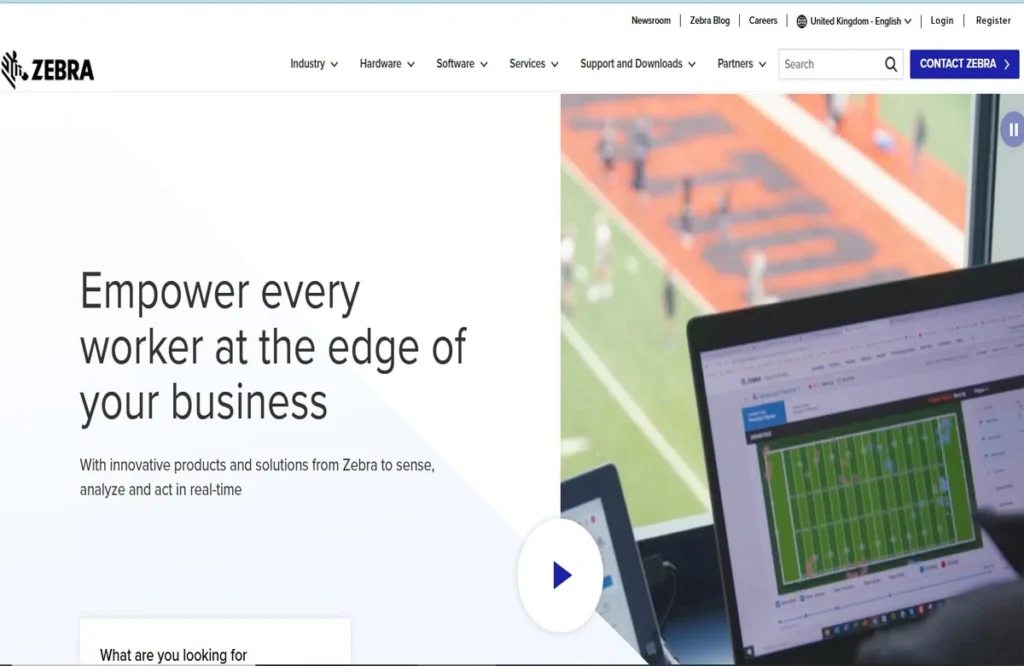
7. Brandripplr
Perfect for influencer marketing meets branding.
Brandripplr is unique on this list because of its strength in influencer-led brand activations. If your business targets young, social media-savvy audiences, this branding agency provides the perfect mix of campaign strategy and brand identity work.
- Services Offered: Branding, influencer marketing, video campaigns, digital content creation
- Global Reach: UAE and GCC countries
- Rates: Variable (depends on influencer networks)
- Clients: Nestlé, Careem, Etisalat
- No. of Employees: 50+
- Organic Traffic: 1.5K
The Brandripplr Difference: Branding That Works
- Ideal for B2C and youth-driven brands
- Great influencer database and campaign ROI tracking
8. The Go-To Guy!
Best for fast-growing startups and branding on tight timelines.
As the name suggests, this branding agency is the go-to for startups that need results quickly. They’re known for working fast without sacrificing quality, especially on naming, brand decks, and visual identity design.
- Services Offered: Branding, digital marketing, naming, corporate presentations
- Global Reach: UAE, India
- Rates: Very startup-friendly packages from $2,000
- Clients: Startups, tech firms, real estate, education
- No. of Employees: 35+
- Organic Traffic: 1.9K
How The Go-TO Guy Delivers Real Results?
- Fast turnaround times
- Strong in naming and pitch deck branding
9. Create Media Group
Best for lifestyle brands and experiential branding.
Create Media is a creative-first branding agency that works with lifestyle, hospitality, and retail brands to craft unique brand experiences. They shine in content production, immersive branding campaigns, and storytelling.
- Services Offered: Brand identity, campaign strategy, content production, social media branding
- Global Reach: UAE, UK, Qatar
- Rates: Moderate to high-end projects
- Clients: Marriott, Dubai Airports, Land Rover
- No. of Employees: 70+
- Organic Traffic: 2.4K
Why The Create Media Group Is the Smart Choice for Your Brand?
- Top-tier storytelling and creative design
- Great for hospitality and luxury industries
10. Iris PR & Branding
A hybrid agency that bridges PR and branding strategy.
If you want both visibility and identity from the branding agencies in the UAE, Iris PR & Branding offers a unique blend of public relations and brand strategy services. Ideal for companies looking to launch with media coverage and strong positioning.
- Services Offered: Branding, media relations, PR campaigns, reputation management
- Global Reach: UAE-focused
- Rates: Packages from $3,500+
- Clients: Healthcare, education, events, and government sectors
- No. of Employees: 20+
- Organic Traffic: 1.3K
Top Reasons to Partner with The Digital Oasis
- Strong PR and press connections in the region
- Great for thought leadership and personal branding
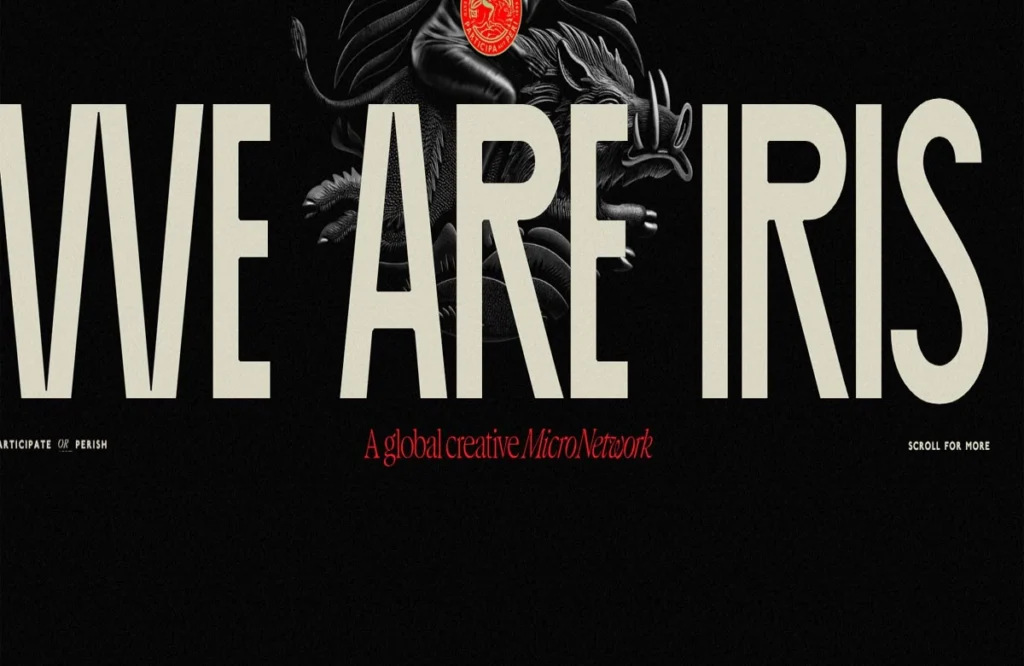
Final Thoughts
The branding agencies in the UAE are evolving with technology, trends, and cultural demands. Whether you’re looking for the best branding agency in Dubai or a Dubai-based design agency with regional insights, there’s something for every type of business in this list.
If you’re serious about taking your brand to the next level, start with the agency that blends strategy, creativity, and results—Digital Oasis.
09 Tips for pro Ads Optimization in Dubai for Google Success
On the playing field of today’s highly competitive digital advertising, just running a Google Ads campaign no longer cuts it. If you want to make a good and really high ROI, then implementing advanced google ads optimization in Dubai is a must for marketers and businesses.
In this blog, I’m going to break down 7 powerful tactics to take your google ads optimization in Dubai strategy to the next level in 2025. Whether you’re struggling to improve your search ads optimization or looking to streamline your ads campaign optimization, the insights below will help you create campaigns that convert, scale, and sustain long-term profitability.
Now, let’s get into some of the advanced ad optimization techniques you can use right away to supercharge your campaign performance.
1. Segmenting Brand vs. Non-Brand Keywords
Separating brand and non-brand search terms is among the most overlooked strategies in Google ad optimization. So, while you’re first kicking off a campaign or auditing an existing one, it’s really important to understand if your conversions or traffic actually come from brand searches (e.g., “Nike running shoes”) or non-brand searches (e.g. “best running shoes”).
Why this matters for ads optimization:
Is your campaign doing well, but the main traffic driver is your brand? If your answer is yes, then you are leaving money on the table. Users are already familiar with your company, so brand traffic is often pretty good. But it doesn’t tell you how your ads are performing in tougher, non-branded environments.
How to optimize:
- Create separate campaigns or ad groups for brand and non-brand keywords.
- Set distinct goals and budgets for each group.
- Monitor the performance of non-brand keywords to evaluate the real strength of your campaign.
This segmentation is critical for accurate search ads optimization and makes scaling easier by giving you a clear picture of what’s actually driving growth.
2. Using SKAGs and STAGs (and Knowing When to Transition)
The basis of any high-performing ads optimization strategy starts with SKAGs (single keyword ad groups) and STAGs (single theme ad groups). In a SKAG model, each ad group contains just one keyword, tightly matched to specific ad copy. This increases ad relevance, Quality Score, and CTR.
However, managing hundreds of SKAGs can become inefficient as your campaign grows. That’s where STAGs come in.
Optimization tip:
- Start with SKAGs when you launch a campaign to test individual keyword performance.
- Transition to STAGs as you scale to manage broader themes while maintaining message match.
This hybrid approach allows you to maintain relevance without overwhelming your account with too many ad groups. It’s one of the best-kept secrets in advanced ads campaign optimization.
3. Optimize Ad Group Structure by Segmenting Match Types
A well-structured ad account is the foundation of search ads optimization. Unfortunately, many campaigns lump all keyword match types—broad, phrase, and exact—into a single ad group. This dilutes performance tracking and limits your ability to control costs effectively.
Here’s a better strategy: segment your ad groups by match type. For example:
- One ad group for exact-match keywords
- One for phrase-match
- One for broad-match
By organizing this way, you can more accurately analyze performance, adjust bids, and pause underperforming variations. A broad-match might drive volume but at a higher cost per acquisition (CPA). An exact-match gives you laser-focused intent and often the best ROI. Segmenting gives you control and insight into how each match type behaves within your campaign.
4. Building Negative Keyword Sculpting with Intent Buckets
When you’re looking to scale efficiently, understanding and managing intent is key. Enter intent buckets: grouping search terms based on user intent (high intent, medium intent, low intent).
Here’s how to build them:
- Start with a broad match campaign.
- Monitor the search terms report.
- Sort terms based on intent:
- High intent (e.g., “buy iPhone 13 today”)
- Medium intent (e.g., “iPhone 13 reviews”)
- Low intent (e.g., “how does a smartphone work”)
- Move high-intent keywords into exact-match campaigns.
- Use negative keywords in the original broad match campaign to “sculpt” the traffic.
This strategy helps you control your ad spending while maximizing conversions. It’s an elite-level search ads optimization technique that can separate good campaigns from great ones.
5. Embrace Value-Based Bidding for High-Intent Conversions
A common pitfall in search ads optimization is optimizing solely for volume instead of value. Not all conversions are created equal. For example, a $50 eBook download and a $5,000 service contract are both conversions, but their impact on your bottom line is drastically different.
That’s where value-based bidding comes in.
Instead of optimizing for conversions alone, you tell Google what each conversion is worth using conversion values. This allows you to:
- Set realistic return on ad spend (ROAS) targets
- Prioritize high-value customers
- Improve profit margins
You can even set custom values depending on the lead type, product category, or funnel stage. This is Google Ads optimization in Dubai at a strategic level, aligning your ad spend with revenue outcomes.
If you haven’t already configured conversion values in your Google Ads account, make this your next priority.
6. Testing Landing Pages with AI-Powered Tools
No ads optimization strategy is complete without serious attention to landing page performance. Many advertisers focus so heavily on ad copy and bidding strategies that they forget the destination of the click: the landing page.
Why this matters:
Even the best ads won’t convert if the landing page is poorly designed, confusing, or irrelevant. That’s why top-performing advertisers constantly test different versions of landing pages using AI tools or platforms like
- Unbounce or Instapage for A/B testing
- Google Optimize or VWO for multivariate testing
- AI copy generators for alternate headlines and CTAs
Optimization insight:
Double-digit conversion increases can come simply from small changes in headline placement, color contrast and, CTA wording. By using these tools as part of your PPC Google Ads optimization workflow, you know that you’re not leaving money on the table after the click.
7. Creating Full-Funnel Campaign Architecture
A full-funnel strategy is one of the most efficient methods of ads campaign optimization (but there are very few who dare to use them). There are too many campaigns that are focusing on bottom-of-funnel (BOFU) keywords only, without being able to help users who are at earlier stages.
What full-funnel google ads optimization in Dubai looks like:
- TOFU (Top of Funnel)—Broad match, educational content, YouTube or Discovery campaigns
- MOFU (Middle of Funnel)—competitor terms, comparison queries, lead magnet offers
- BOFU (Bottom of Funnel)—Branded terms, product-specific keywords, high intent CTAs.
By mapping your Google Ads campaigns to the buyer’s journey, you increase not just conversions but also customer lifetime value (CLTV).
Pro tip: Use remarketing to tie each funnel stage together. A user who clicks a TOFU ad and doesn’t convert can be retargeted with MOFU or BOFU content later.
8. Structuring Campaigns for Budget Efficiency
One of the biggest factors influencing ad campaign optimization is how you allocate your budget. For instance, many advertisers run several campaigns at the same time and consequently, the budget is fragmented between various campaigns.
Here’s how to fix it:
- Consolidate similar ad groups into shared budget campaigns.
- Use portfolio bidding strategies to group campaigns with similar goals.
- Pause underperforming campaigns temporarily to funnel the budget to high performers.
- Use Google’s Performance Planner to predict spend-to-conversion ratios.
Another advanced move is to align budget distribution with your intent buckets or funnel stages. High-converting BOFU campaigns may get a smaller budget but drive more ROI, while TOFU campaigns build future demand.
Understanding budget efficiency is key to long-term ads optimization—especially as costs per click (CPC) continue to rise across industries.
9. Leverage Smart Bidding with Human Oversight
For good reason, Google has been pushing Smart Bidding aggressively. Smart Bidding strategies such as Maximize Conversions, Target ROAS, or Target CPA can also help you improve your performance for most advertisers.
However, handing over the reins entirely to Google is not always the best option.
Here’s what advanced marketers do:
- Start with manual CPC while collecting conversion data.
- Switch to Target CPA or Maximize Conversions once you have at least 30–50 conversions per campaign.
- Use bid modifiers for device, time, and location even when on Smart Bidding.
- Continuously monitor for anomalies—Smart Bidding isn’t perfect.
The best google ads optimization in Dubai happens at the intersection of automation and human insight. Let algorithms do the heavy lifting, but stay vigilant and ready to intervene.
Bonus Tips for Long-Term Ads Optimization Success
In addition to the seven advanced strategies above, here are a few bonus tactics you can apply to boost your results further:
1. Utilize Google Ads Scripts
Automate repetitive tasks like pausing non-performing ads or adjusting bids based on day of the week. Scripts can save you time and reduce manual errors.
2. Run Competitive Ad Copy Tests
Use tools like SpyFu or SEMRush to analyze your competitors’ ads and test new value propositions or CTAs.
3. Regularly Clean Up Search Terms
Every few weeks, review your Search Terms Report and add negative keywords to eliminate wasted spending. This helps your search ads optimization stay tight and relevant.
4. Align Ads with Landing Page Messaging
Use Dynamic Keyword Insertion (DKI) in headlines to match user search terms and improve CTRs. Make sure the landing page reflects the same message and tone.
5. Monitor Quality Score Drivers
Track how changes in CTR, landing page experience, and ad relevance affect your Quality Score. Higher scores = lower CPCs and better ad placement.
Ads Optimization Is a Continuous Process
Optimizing ads is not a one-and-done—it’s a never-ending loop of testing, analyzing, and refining. After all, whether it’s refining your google ads optimization in Dubai strategy, improving your search ads optimization or redesigning the whole ads campaign optimization structure, what is most important is your innovation towards the data-driven decisions.
Start implementing the strategies discussed here. Segment your campaigns, test relentlessly, structure budgets wisely, and blend automation with human strategy. By doing so, you’ll build a system that not only performs today but also adapts and improves over time.
Struggling with Google Ads Performance? Let’s Fix That
If this sounds like a lot to manage—it is. That’s why Digital Oasis is here to help.
At Digital Oasis, we specialize in ad optimization that delivers real results. Whether you’re struggling with campaign structure, creative performance, or ROI, our team of experts can:
- Build and manage high-performing Google Ads campaigns
- Create compelling ad creatives and laser-focused landing pages
- Optimize bidding strategies for the best return
- Take the entire process off your plate, so you can focus on running your business
Let us turn your ad spend into real growth. Book your free consultation with our team today and discover how Digital Oasis can be your partner in Google Ads success.

